A PARTNERSHIP IN TRANSITION:
VISION 2030 AND THE FUTURE OF THE U.S.-SAUDI
BILATERAL RELATIONSHIP

January 2025



VISION 2030 AND THE FUTURE OF THE U.S.-SAUDI
BILATERAL RELATIONSHIP

January 2025


Saudi Arabia has long been a critical partner for the United States, serving as a foundation of U.S. policy toward the Middle East, a leader in global energy markets, and a pivotal actor in Middle Eastern diplomacy. The introduction of Vision 2030 in 2016 marked a transformative shift in this relationship, reframing Saudi Arabia’s role on the global stage as it seeks to diversify its economy, reduce its dependence on oil, and establish leadership in emerging industries like artificial intelligence, renewable energy, and critical minerals. The Kingdom’s transformation provides new avenues for cooperation in the bilateral relationship, while also posing new risks.
This report, A Partnership in Transition: Vision 2030 and the Future of the U.S.-Saudi Bilateral Relationship, offers an in-depth analysis of the evolving U.S.-Saudi partnership in light of Saudi Arabia’s ambitious Vision 2030 agenda. Section One traces the historical foundations of the bilateral relationship, highlighting its enduring strategic pillars and examining how Crown Prince Mohammed bin Salman’s (MBS) leadership has reshaped these dynamics. Section Two delves into the energy sector, which has long underpinned the bilateral relationship through oil, but now includes renewable energy, a potential civil nuclear program, and hydrogen exports. Section Three explores key areas for both future collaboration and potential competition, including emerging sectors such as artificial intelligence, semiconductor chips, and critical minerals, all relevant to great power competition between the United States and China. Section Four broadens in scope to discuss the general investment environment in Saudi Arabia, outlining issues U.S. policymakers and firms should continue to monitor.
The success of Vision 2030 remains uncertain. Its reliance on top-down reforms under MBS introduces risks, including societal backlash and potential instability. Moreover, Saudi Arabia’s non-aligned approach between the United States and China adds complexity to the bilateral relationship, as Riyadh seeks opportunities from both Washington and Beijing. Policymakers must carefully navigate these uncertainties, addressing human rights concerns while ensuring reforms foster inclusive and sustainable growth.
Through this analysis, the report provides policymakers with actionable insights and policy recommendations to manage the complexities of the U.S.-Saudi relationship, emphasizing critical sectors such as security, energy, and technology. By addressing the opportunities and risks
inherent in this transformative period, the report seeks to equip U.S. leaders with the tools necessary to foster a partnership that advances mutual strategic interests while mitigating potential challenges.
This report includes recommendations that U.S. policymakers can adopt to navigate these changing dynamics. More detailed information on the recommendations is included within each section of the report.
Dimensions of the Bilateral Relationship
• Leverage Saudi Arabia’s Strategic Interests to Advance U.S. Goals
• Cooperate on Regional Stabilization and Reconstruction Efforts
• Prioritize Human Capacity Building
Energy: Oil Production and the Electricity Sector
• Utilize Energy Dialogues for Oil Diplomacy
• Invest in Joint Research on Carbon Capture and Storage Technologies
• Cooperate on Key Renewable Energy Sectors
• Continue to Negotiate a Civil Nuclear 123 Agreement
Emerging Technologies
• Strengthen Export Control Coordination with Allies
• Establish Educational Exchanges on Artificial Intelligence
• Formally Secure Shared Interests in Critical Minerals
Investment Considerations
• Maintain Guidance for U.S. Firms on Saudi Arabia’s Investment Environment
• Promote Labor Market Development Partnerships

This report aims to help U.S. policymakers gain a better understanding of the history of the U.S.-Saudi bilateral relationship, understand where emerging priorities for Saudi Arabia could pose opportunities for greater collaboration, and identify where risks remain in the bilateral relationship. The document examines Saudi Arabia’s economic history and recent efforts to modernize; opportunities and risks to the security relationship; the role shifting energy demands and emerging technologies play in shaping bilateral ties; and key uncertainties that could affect Saudi Arabia’s efforts to diversify. The contents of this report have been reviewed and updated to assure accuracy and relevance through December 21, 2024.
This publication was created for our client, the Middle East Institute (MEI). This report represents the analytical conclusions of the authors, and not those of MEI.
MEI is a non-partisan Washington-based think tank dedicated to studying the Middle East. MEI provides expert policy analysis, offers educational and professional development services, and serves as a hub for engaging with the region’s arts and culture. Find out more at https://www.mei.edu/.
This report was produced by twelve second-year students in the Master in Public Affairs (MPA) program at Princeton University’s School of Public and International Affairs (SPIA). It was completed under the supervision of Dr. Nicholas Lotito and fulfills the requirements of the Princeton SPIA MPA program.
Amana Abdurrezak
Maria Dooling
Jackson Blackwell Joshua Heupel
Nick Brown
Maddie Davet
Emily Davies
Dylan Gates
Anna Schaeffer
Rafael Swit
Sydney Taylor
Jennifer Williams
We extend our gratitude to the current and former government officials, scholars, journalists, and business leaders who generously offered their expertise and time to this policy workshop. The insights and resources they shared during interviews conducted in the United States and Saudi Arabia were pivotal in shaping and informing this report.
©2025. Princeton University, School of Public and International Affairs


Over 80 years ago, the bilateral relationship between the United States and Saudi Arabia began to take shape with the establishment of diplomatic ties in 1940 aboard USS Quincy and through the creation of the Arabian American Oil Company (Aramco) in 1944. This critical partnership has been anchored in a security-for-oil arrangement since the end of World War II, with U.S. protection ensuring the movement of Saudi Arabia’s vast oil reserves. The Cold War period saw the United States rely on the Kingdom and Iran as part of its “Twin Pillar” policy to project stability in the region. This era also further solidified this partnership with Saudi oil playing a crucial role in rebuilding Europe and supporting mutual interests in countering communism. However, the relationship soon faced significant strains due to differing views on Israel and incidents like the 1973 oil embargo that caused economic turmoil in the West and highlighted their fragile ties.1
Despite strains, Saudi Arabia’s critical political and cultural influence in the Middle East—particularly its role as custodian of Islam’s holiest cities, Mecca and Medina—along with shared strategic priorities, such as stabilizing the Gulf and later countering Iranian aggression, have helped keep the partnership intact. This has largely remained true even as human rights concerns and political tensions have complicated the relationship over the years.
Mutual interests in ensuring regional stability in the Middle East have remained foundational to the bilateral relationship. This is particularly evident in the United States’ longstanding goal of normalizing ties between Saudi Arabia and Israel.2 The United States views such normalization as crucial to maintaining its influence in the Middle East, ensuring Israel’s security and long-term stability, and containing adversarial influences.3 For Saudi Arabia, normalization holds value in its economic opportunities and geopolitical leverage, particularly in securing a defense agreement that it views as vital for deterring Iran and maintaining its national security.4
Opportunities to collaborate on shared interests have blossomed into cooperation across multiple sectors. The partnership has focused
on enhancing security, namely fortifying coastal and border defense, as well as cybersecurity and counterterrorism.5 In other sectors, cultural and educational exchanges have been established for students, professionals, and researchers alike.6 Furthermore, economic ties have strengthened trade between and investments in both countries, facilitated by the establishment of the Trade Investment Framework Agreement in 2003.7
The United States and Saudi maintain a robust economic relationship. In 2022, total U.S.-Saudi trade in goods and services reached $46.6 billion, with crude oil exports dominating U.S.-Saudi trade. The United States exported $21.6 billion to Saudi Arabia and imported $24.9 billion from the Kingdom, resulting in a $3.3 billion U.S. trade deficit. The United States is Saudi Arabia’s fifth largest export destination, while Saudi Arabia ranks as the 30th largest U.S. trading partner.8
U.S. imports from Saudi Arabia mainly consist of crude oil imports which peaked in 2012 before declining as the United States met more of its own oil demand from domestic sources.9 Crude continues to dominate imports from Saudi Arabia, but a more balanced trade deficit reflects the Kingdom’s weakened influence on U.S. oil markets. Meanwhile, U.S. imports of petrochemicals and machinery have slightly risen over time.
U.S. exports to the Kingdom are more diverse, consisting of transportation equipment ($4.75 billion), non-electric machinery ($2.08 billion), chemicals ($1.48 billion), and food ($1.20 billion).10 The United States also has $126.6 billion in active cases in the Foreign Military Sales to Saudi Arabia, with over $27 billion in sales to date.11 The figures on the next page show the trade relationship between the United States and Saudi Arabia.12
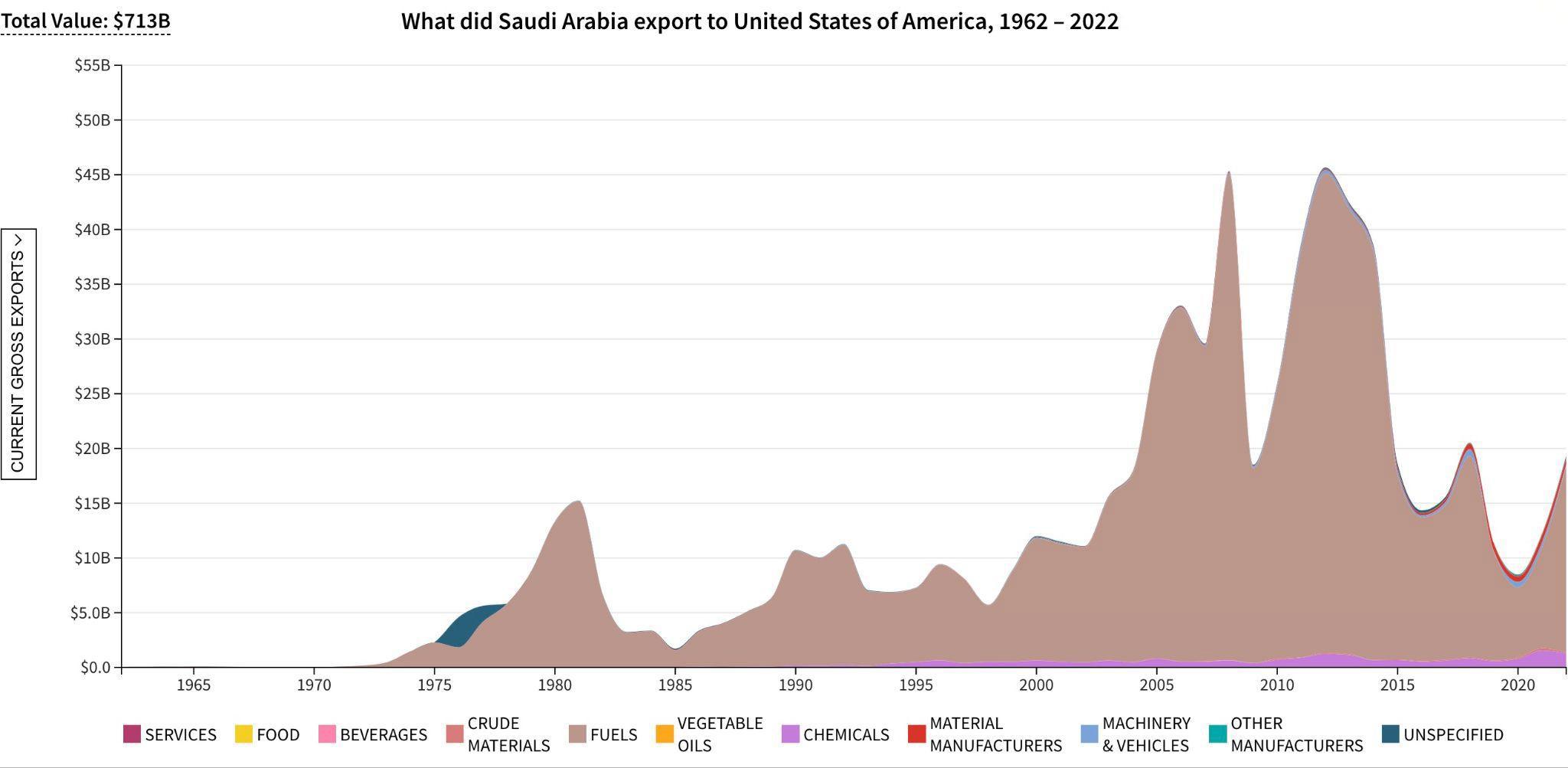
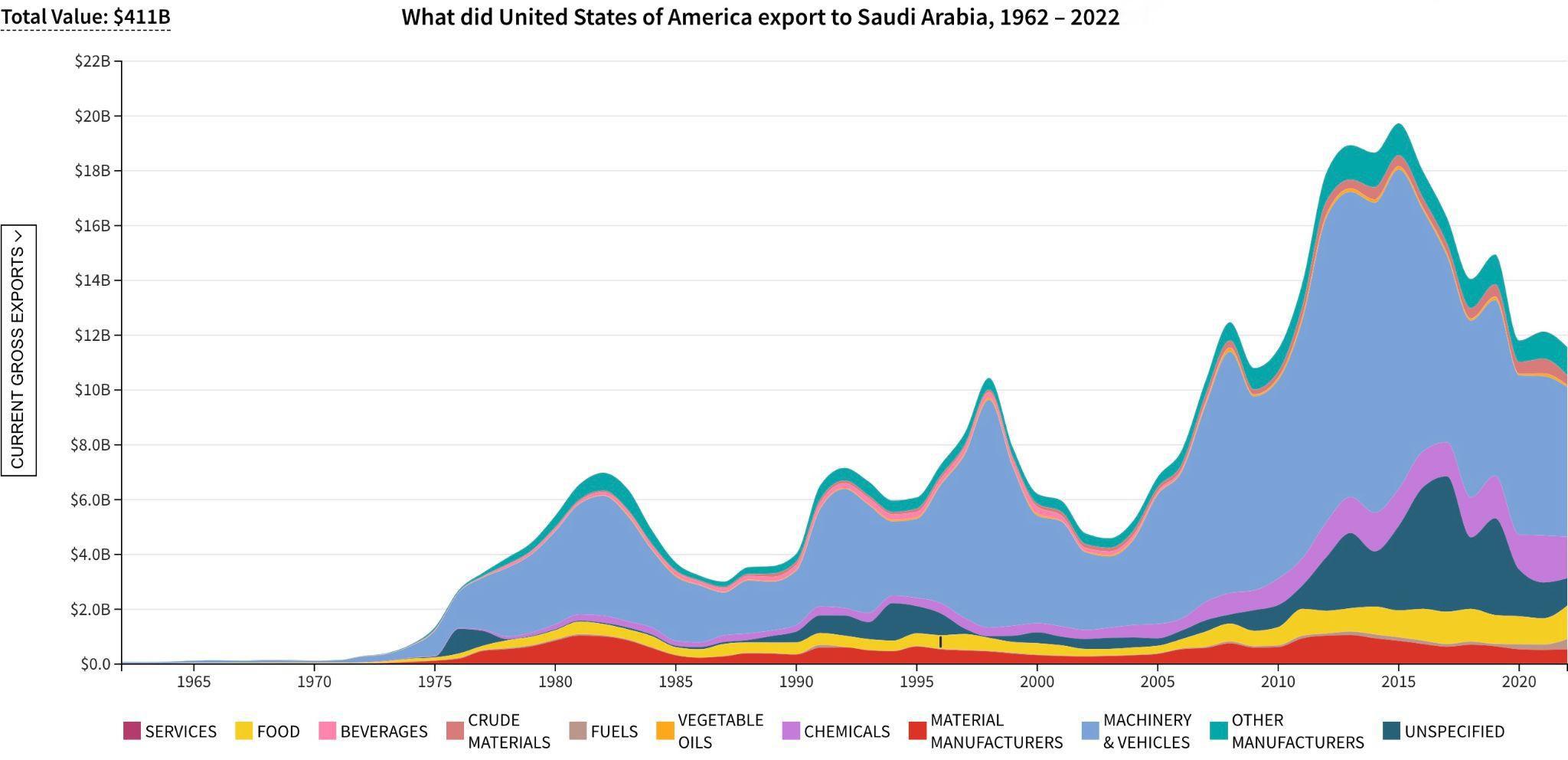
Source: Atlas of Economic Complexity

The Saudi Central Bank (SAMA) holds $139 billion in U.S. Treasury securities to maintain the Saudi Arabian Riyal’s peg to the U.S. dollar. In the last two years, SAMA increased its Treasury holdings by $30 billion and now holds about 1.6 percent of Treasury securities held by foreign investors.13
Public and private sector Saudi investors hold approximately $207 billion in U.S. equities, representing a tiny fraction of total foreign holdings of U.S. equities ($17.5 trillion as of October 2024).14 The Public Investment Fund (PIF) is one of the largest Saudi investors in U.S. equities, holding around $26 billion in U.S. stocks as of September 2024. Close to 50 percent of PIF holdings are in Uber, Lucid, and Electronic Arts Inc. (“EA Games”).15 Holdings are down from a peak of $36 billion in September 2023, potentially reflecting a strategic shift to prioritize domestic investments by the Kingdom.16
In 2023, Saudi Arabia’s total FDI stock in the United States reached approximately $7.5 billion, an increase of about $1.5 billion since 2016, accounting for around 0.1 percent of the total FDI stock in the United States.17
U.S. FDI stock to Saudi Arabia totaled $15.4 billion in 2023, an increase from $13.1 billion in 2016. FDI from the United States is around seven percent of the Kingdom’s inbound FDI.18 U.S. FDI to Saudi Arabia is primarily from nonbank financial firms, and the mining and wholesale trade industries.19
Saudi Arabia is the world’s 19th largest economy, the second largest in the Middle East behind Turkey, and the largest economy in the Gulf. Saudi Arabia’s GDP grew from approximately $665 billion in 2016 to $1.07 trillion in 2023. In 2023, its economy contracted by 0.8 percent, due in part to a fall in oil prices. 20,21,22 Saudi Arabia’s debt-to-GDP increased from zero percent in 2016 to 26 percent in 2023 reflecting large investments associated with Vision 2030.
Saudi Arabia has increased exports in petrochemicals, fertilizers, and aluminum over the last decade. In 2022, petroleum-related exports were nearly 72 percent ($255.6 billion) of the Kingdom’s total exports. Non-oil exports were valued at $99.4 billion, up from approximately $60 billion a decade ago. Much of the growth in non-oil exports is from petrochemicals produced mainly by Saudi Basic Industries Corporation (SABIC). Beyond petrochemicals, Saudi has expanded exports in fertilizers. Furthermore, a joint venture between state mining company Ma’aden and Alcoa in 2009 led to the mining and processing of aluminium, now worth $2.5 billion per year.
The Kingdom’s labor market continues to improve. The unemployment rate stands at a historic low of 8.5 percent. Total labor force participation rose from 40 to 50 percent from 2016-23 as a result of women entering the labor market in large numbers. From 2016-23, the female labor force participation rate rose from 22.8 percent to 36.2 percent.23
Vision 2030, Saudi Arabia’s plan to reestablish itself as “a vibrant society, a thriving economy, and an ambitious nation,” serves as MBS’s blueprint for creating a more sustainable and diversified Saudi economy.24 First announced in April 2016, Vision 2030 lays out a plethora of social, economic, energy, cultural, and governance goals that aim to reduce the country’s dependence on oil and position itself as a leader in several emerging industries.25 A number of social reforms (e.g., restructuring of the healthcare and education sectors) complement these economic goals, underscoring ways to create a workforce that can support the country’s push towards leadership in promising sectors.
Notably, Vision 2030 has served as the guidepost for the Kingdom to “open up” and reintroduce itself on the global stage. Sectors like tourism and entertainment play a central role in reshaping Saudi Arabia’s image, as it seeks to attract a broad range of visitors—casual, religious, and luxury— while addressing the social and recreational needs of its own population, especially its youth (see section 1d. Cultural and Public Diplomacy).26 In

parallel, giga-projects such as the Red Sea Project, Diriyah Gate, Qiddiya, and NEOM play a role in creating new economic ecosystems that fuel diversification efforts and attract further traffic to the Kingdom.27,28
Vision 2030 reflects Saudi Arabia’s broad ambition to elevate its global standing. This objective precipitates Saudi Arabia’s efforts to distance itself from its historical association with Wahhabism, a more traditional interpretation of Islamic doctrine and law.29 However, achieving this requires balancing a complex set of factors, including modernizing to meet global aspirations without undermining traditional values and religious roots. Ultimately, this pivotal strategy
document is the Kingdom’s blueprint to address an enduring conundrum: how to actualize its global and domestic aspirations, while still maintaining its cultural and religious identity.30
Vision 2030 signals Saudi Arabia’s aspirations to transform its society and bolster its global position, but by the ambitious nature of the reforms, Saudi Arabia faces many challenges in successfully implementing Vision 2030. The document provides insight for U.S. policymakers into the motivations of the Kingdom, making it necessary for interested parties in the United States to understand associated opportunities and risks as they navigate the U.S.-Saudi bilateral relationship.

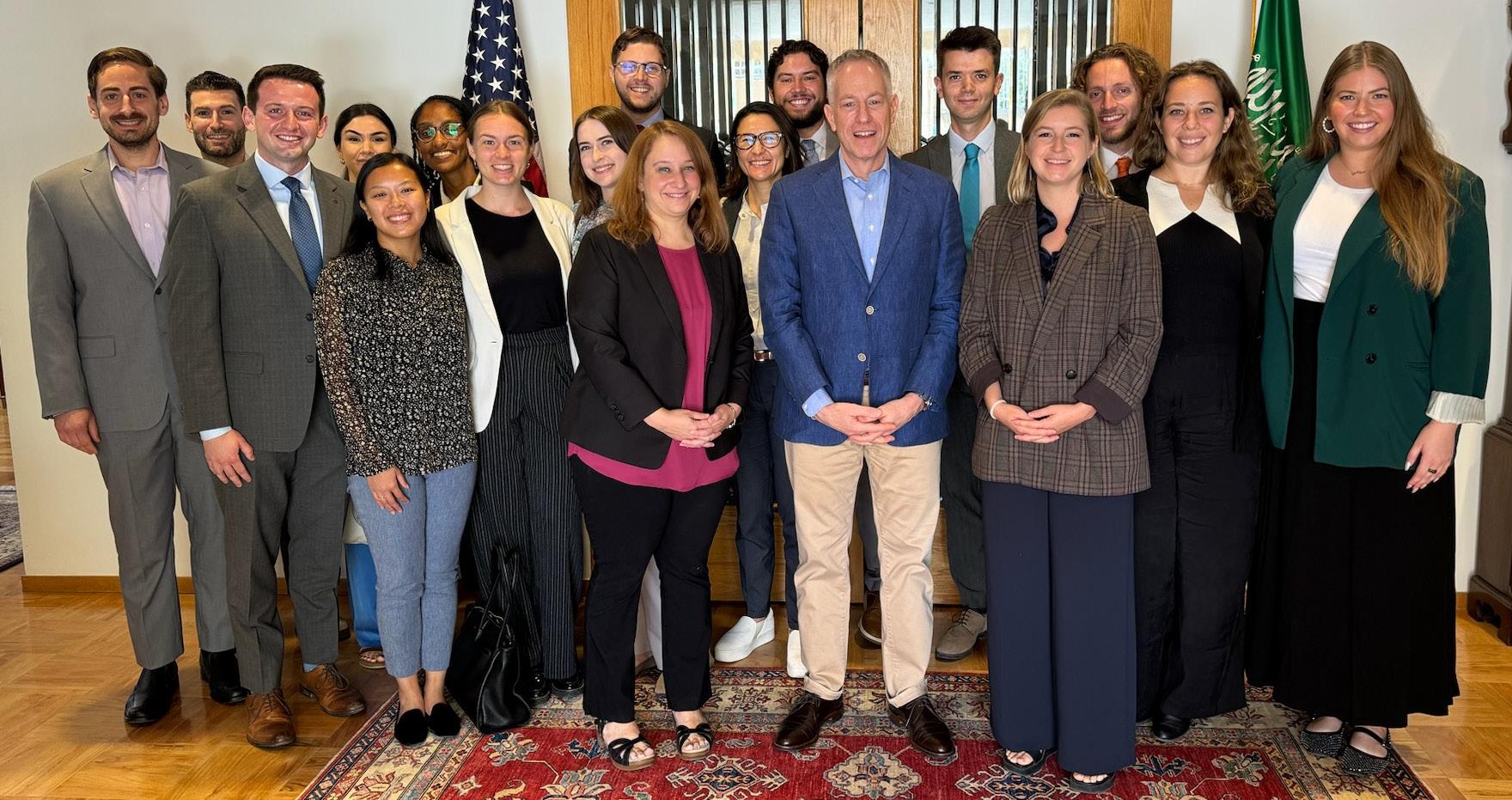

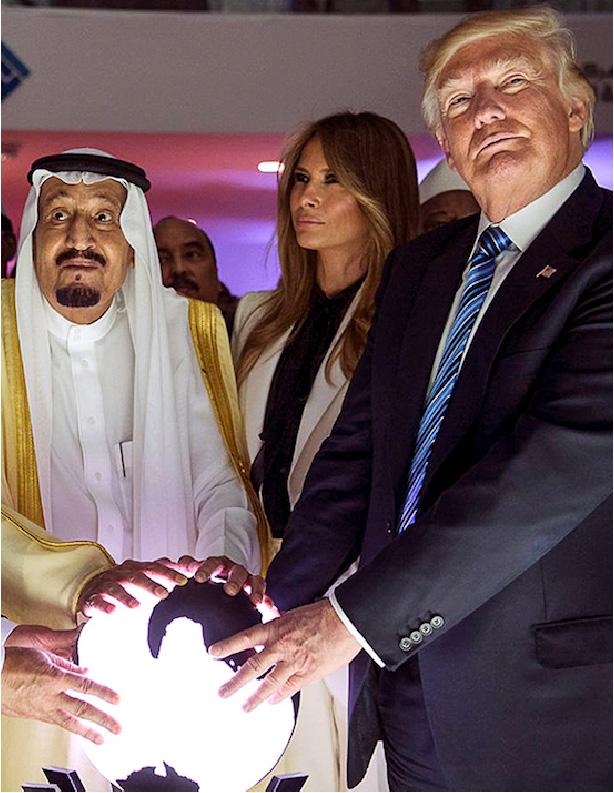
The U.S.-Saudi relationship is rooted in shared interests, namely security and oil. Throughout their decades-long relationship, alignment on strategic priorities further solidified their partnership, even as their differing political systems, views on regional conflicts, and values introduced moments of tension.31 These shared interests and strategic considerations, along with scope for alignment with Vision 2030, underscore the Kingdom’s continued position as one of the important U.S. partners in the region.
Key Takeaway: Despite historical tensions, the U.S.-Saudi relationship endures, driven by strategic imperatives, with the Kingdom remaining a critical partner for advancing regional stability, defense cooperation, and countering adversarial influences in the Middle East.
The al-Qaeda terrorist attacks on September 11, 2001 marked a watershed moment in the U.S.-Saudi relationship. Of the 19 al-Qaeda affiliated terrorists, 15 were Saudi citizens, and Osama bin Laden, the mastermind behind the attack, hailed from one of the Kingdom’s most successful business families.32 The Saudi government denied involvement and condemned the attack, and the bilateral relationship remained cooperative. Following the 2003 al-Qaeda attacks in the Kingdom, Saudi Arabia took the threat of extremism more seriously and U.S.-Saudi counterterrorism cooperation was significantly enhanced, an effort that continues today.33
Despite cooperation on counterterrorism, the U.S. invasion of Iraq raised Riyadh’s fears that Washington sought closer ties with Tehran. This fear escalated under the Obama administration, given efforts to engage Iran, withdraw from Iraq, and support the Arab Spring.34 Saudi leaders further questioned the United States’ commitment to their security with the administration’s “pivot” to Asia appearing to leave a vacuum for Iran to fill. This tension continued with the 2015 Joint Comprehensive Plan of Action, which the United States viewed as a landmark control on Iran’s nuclear program.35 Washington grew frustrated with Saudi Arabia’s opposition to the deal and its backing of regional counterrevolutionaries, while Riyadh felt the agreement ignored Iran’s destabilizing activities—a dynamic that contributed to Saudi Arabia’s intervention in Yemen.3637
The 2016 Trump administration ushered in a newfound positivity in the bilateral relationship, allowing actions that would have previously strained the U.S.-Saudi relations to draw only muted responses from the Kingdom (e.g., moving the U.S. embassy in Israel to Jerusalem).38 Yet, Saudi Arabia’s fears around U.S. security guarantees continued to grow after the 2019 Iranian attack on two major oil installations operated by Aramco. President Trump publicly threatened a military response, but never launched a retaliatory attack on Iran, instead opting to deploy additional troops to the Gulf and support Saudi’s air defense.39,40 Although not bound by any treaty, the
Kingdom expected U.S. retaliation against Iran due to Trump’s “maximum pressure” policies toward Iran and the oil price spike caused by the attack.41 Around this time, members of Congress and the public became increasingly critical of the Kingdom after the murder of Washington Post columnist Jamal Khashoggi. Though Trump largely shielded MBS, Congress and the American public paid increased attention to human rights violations in the Kingdom and the United States’ role in Saudi Arabia’s escalatory intervention in Yemen.42
Reflecting this mounting criticism, President Joe Biden called Saudi Arabia a “pariah,” pledging to “make them pay” for their actions during his 2020 presidential campaign.43 One of his first actions after his inauguration was halting the sale of offensive weaponry to Saudi Arabia. However, Russia’s invasion of Ukraine in February 2022, combined with domestic inflation, raised energy prices and prompted a recalibration.44,45 This highlighted the continued importance of the Kingdom as a swing oil producer. The bilateral relationship improved further in the second half of the Biden administration, as they increasingly recognized Saudi Arabia’s role in regional stability—a dynamic reinforced by Israel’s war in Gaza. In August 2024, the Biden administration lifted its ban on offensive weapon sales to Saudi Arabia, demonstrating once again that broader strategic interests drive the strengthened relationship.46
Alignment on security priorities enables Saudi Arabia and the United States to partner on military and intelligence operations necessary to carry out shared security objectives. Saudi Arabia is the United States’ largest customer of foreign military sales, receiving 80 percent of its defense acquisitions from the United States.47
In terms of deployed forces, as of June 2023, the U.S. military deploys approximately 2,700 military personnel in the Kingdom and hundreds of personnel that support long-standing U.S.-Saudi security cooperation programs for military and internal security forces.48 These cooperation programs serve as an important pathway for closer bilateral ties, facilitating shared intelligence and military coordination. Counterterrorism remains a central focus of these collaborations, as Saudi Arabia seeks to counter extremist ideologies and encourage a culture of moderation in the aftermath of 9/11 and the 2003 attacks on the Kingdom.49,50,51 For instance, Saudi Arabia established and is the second-largest funder of the United Nations Counter-Terrorism Centre, contributing over $110 million since its inception in 2011.52

Prior to October 7, 2023, a U.S.-Saudi-Israel “megadeal” that reportedly included (1) a U.S. defense treaty for Saudi Arabia, (2) normalization of ties between Saudi Arabia and Israel, (3) a civilian nuclear energy program, and (4) dignity for the Palestinian people that fell short of declared Palestinian statehood was said to be within reach.53 However, this deal stalled following Hamas’ attack on Israel and the ensuing war in Gaza, as discontent in Israel, the United States, and the Kingdom eroded public support for a megadeal in the short-term.
Saudi-Israeli normalization remains a “declared national security interest of the United States” and an opportunity to stabilize the region and ultimately pivot away from the Middle East.54 Though the trilateral deal is on hold for the foreseeable future, Saudi Arabia continues to seek a bilateral treaty-level defense pact with the United States. However, treaties require two-thirds ratification of the U.S. Senate, a difficult feat under current political conditions. A U.S.-Saudi bilateral pact, absent progress on normalization, risks diluting U.S. leverage in the region, as Washington typically ties such commitments to broader concessions that align with its strategic objectives. At the same time, the Kingdom’s increasing engagement with rival powers like China and Russia raises the stakes for maintaining a strong partnership, as Saudi Arabia’s hedging and non-alignment strategies risk undermining U.S. regional influence. While offering a pact might secure short-term alignment and counter China’s expanding influence in the Gulf, it could also deepen U.S. entanglement in regional conflicts without securing the long-term benefits normalization could provide.
Saudi Arabia has also expressed interest in receiving U.S. assistance with the establishment and development of a Saudi civilian nuclear energy program as part of a megadeal (see section 2c. Nuclear Energy).55 Additionally, discussions have emerged around a “less-for-less” deal that falls short of a traditional treaty obligation but still includes an expansion of joint military exercises, partnerships between U.S. and Saudi defense firms, investments in advanced technologies, and an increase in weapon sales.56 This deal would likely include elements to prevent Riyadh from collaborating with Beijing in sensitive high-tech areas like artificial intelligence and data center development.57 It remains to be seen which of the aforementioned deals, if any, might gain traction among relevant parties or be preferred by the incoming Trump administration. Balancing the opportunities and risks of any strengthened security partnership requires a cautious approach that safeguards U.S. flexibility and long-term strategic interests.
Key Takeaway: Saudi Arabia’s recent shift toward diplomacy, economic development, and a more balanced foreign policy underscores its evolving role as a vital U.S. partner, crucial for fostering regional stability and countering adversarial influences in a rapidly changing Middle East.
Historically, Saudi Arabia served as a status quo power in the Middle East supporting stability in the region via partnerships with the United States and other Western nations. Following the 1979 Iranian Revolution, Saudi Arabia became the primary counterweight to revolutionary Iran, opposing its ideological and geopolitical ambitions.58 While Saudi Arabia and the United States faced different challenges in aligning their actions with their stated values – particularly around human rights – their mutual interest in containing Iran’s influence and countering Shia revolutionary movements helped sustain their partnership. To counter Iran and extend its own influence, Saudi Arabia exported Wahhabism by funding mosques, madrassas, and Sunni political factions around the world. While this religious soft power reinforced Saudi leadership, critics argue it also contributed to regional radicalization and instability.59
As MBS rose to influence in 2015, the Kingdom adopted a more assertive and interventionist foreign policy, attempting to reshape the region in Saudi Arabia’s image. In doing so, Saudi Arabia shifted from a stabilizing force to a regional destabilizer. The war in Yemen, spearheaded by MBS, devolved into a costly proxy war with Iran, causing one of the largest humanitarian crises without achieving Saudi objectives.60 The Qatar blockade similarly backfired, pushing Qatar closer to Turkey and Iran.61 Additionally, Saudi Arabia’s reported coercion of Lebanese Prime Minister Saad Hariri into resigning under duress damaged its reputation as a reliable regional partner and underscored its heavy-handed and controversial approach to regional diplomacy.62 These ventures failed to achieve their desired outcomes, instead contributing to a global perception of MBS as belligerent, unpredictable, and impulsive. These setbacks and reputational damage prompted a recalibration of Saudi foreign policy, with MBS pivoting toward diplomacy and mediation. In recent years, Saudi Arabia has prioritized de-escalation, as exemplified by the 2022 ceasefire with the Houthis and the Chinesemediated 2023 détente with Iran.63 The Kingdom now relies on economic and development initiatives rather than religious export to exert influence, and increasingly

seeks to position itself as a regional and global diplomatic heavyweight. This shift is not merely a change in tactics but a necessity driven by the Kingdom’s economic priorities under Vision 2030.
Instability risks undermining Vision 2030 by deterring foreign investment, disrupting energy exports, and damaging Saudi Arabia’s image as a stable hub for tourism and economic innovation—core pillars of the plan and motivations behind the Kingdom’s foreign policy.
The war in Yemen remains a persistent challenge, with Houthi rebels threatening critical infrastructure in Saudi Arabia, energy exports, and maritime traffic, particularly in the critical Red Sea corridor, which hosts 15 percent of global maritime trade volume.64 Similarly, renewed uncertainty in Syria, the ongoing war in Gaza, and tensions in the West Bank risk spillover effects in border nations and within Saudi Arabia. Real and perceived insecurity jeopardizes the Kingdom’s regional comparative advantage as a stable destination for tourism and investment.
The war in Gaza has galvanized public opinion across the Muslim world, with the percentage of Saudi citizens viewing the Palestinian cause as central to Arab identity rising from 69 percent in 2022 to 95 percent in 2023.65 In response, MBS shifted from muted support for Palestinian dignity to explicitly reaffirming Saudi Arabia’s commitment to Palestinian statehood, balancing domestic pressures and regional dynamics.66,67 Given the Kingdom’s history of radicalization, MBS is also concerned with the effects of the war on his citizenry.68 Prolonged conflict or escalations, such as further annexation of Occupied Palestinian Territories, risk inflaming extremist sentiments, which could destabilize the Kingdom and threaten Vision 2030 implementation.
In recognizing the risks of over-reliance on the United States, the Kingdom has diversified its alliances. Saudi Arabia has deepened ties with China and – despite tensions – Russia to advance security and economic goals.69 China’s mediation in the Saudi-Iran détente and Saudi Arabia’s inclusion in BRICS, a group of nations (Brazil, Russia, India, China, and South Africa) aiming to counter Western influence, highlight its multipolar strategy. Similarly, collaboration with Russia in OPEC+ (Organization of the
Petroleum Exporting Countries) reflects Saudi efforts to stabilize oil markets while reducing dependence on U.S. alignment. This pragmatic shift reflects an effort to shield itself from Western escalation with China and Russia, positioning itself as a swing power.
The incoming Trump administration inherits a region markedly different from the one it first encountered in 2017, but Saudi remains a vital player in it.
Saudi-Israeli normalization would signal a major shift in Arab-Israeli relations, offering opportunities for increased economic and diplomatic engagement and regional cooperation. While MBS has been cautious about championing Palestinian statehood in the past, domestic and regional pressures necessitate conditioning normalization efforts on a pathway for Palestinian statehood. However, Israeli Prime Minister Benjamin Netanyahu’s political calculus makes such a pathway difficult in the near term.70,71 Given its vested interest in stability, Saudi Arabia will likely partner with U.S. efforts to broker a cease-fire and consider the future of governance and reconstruction in Gaza.
The United States looks to Saudi Arabia to support stabilization efforts in Lebanon, particularly in countering Hezbollah’s influence. Similarly, Saudi Arabia’s cautious approach to Yemen aligns with U.S. interests in reducing Iranian influence. Saudi Arabia is unlikely to pursue direct involvement that could provoke Houthi retaliation, even if U.S. policies shift toward renewed hostilities.72 But the United States can continue to encourage Saudi Arabia to serve as a financier and purveyor of reconstruction and development, central to any post-conflict recovery.
Former President Bashar al-Assad’s ousting in December took many by surprise.73 Saudi Arabia’s rapprochement with Iran and the Assad regime had signaled a pragmatic shift, but Syria’s future now remains uncertain. Saudi Arabia, like the rest of the world, is closely monitoring the developments in Syria and is in communication with leadership and stakeholders in the country.74 Saudi Arabia seeks to play a more active diplomatic role in shaping Syria’s post-Assad governance, leveraging its regional influence to support stabilization efforts and limit the resurgence of Iranian or extremist factions. What this – and a potential

clash between Turkish and Israeli interests in Syria – will mean for U.S. policy remains unclear, but Saudi Arabia could align with U.S. efforts to stabilize Syria, finance reconstruction, and reduce Iranian influence in the new era.75
While the Middle East’s future remains unpredictable, Saudi Arabia’s pivot toward diplomacy and conflict deescalation marks a significant evolution in its regional role, indicative of both lessons learned and geopolitical necessity. However, this nascent pivot carries the risk of reversal or inconsistency. As MBS continues to position the Kingdom as a regional stabilizer and global player, the country’s importance to both regional stability and U.S. interests cannot be overstated.
Key Takeaway: Human rights remain a critical tension in U.S.-Saudi relations and reforms under Vision 2030—such as advancements in women’s rights—are undercut by continued repression of dissent.
Human rights have become an unavoidable topic in U.S.Saudi relations, particularly in recent decades as Washington has increasingly scrutinized Riyadh’s treatment of women, political dissidents, and migrant laborers. While MBS introduced reforms expanding women’s rights and improving socioeconomic opportunities under Vision 2030, these advancements coexist with intensified repression. Ongoing concerns include the persecution of political dissidents and activists, executions for nonviolent offenses (e.g., drug-related crimes), a lack of due process in legal proceedings, inhumane treatment in the criminal justice system, alleged abuses of migrants seeking illegal entry into the Kingdom, and limited legal rights and protections for documented migrant workers under the kafala system.
Several high-profile events have underscored contradictions in Saudi Arabia’s human rights policy and their implications for the U.S.-Saudi relationship. The 2018 murder of journalist Jamal Khashoggi drew global condemnation and remains a central reference point in discussions about the Kingdom’s human rights record. Meanwhile, the Saudi-led intervention in Yemen caused significant civilian casualties, sparking bipartisan concern in Washington over the U.S. role in providing arms and support.76 Harsh penalties for dissent, including multidecade prison sentences for critical tweets, reflect persistent contradictions in the Kingdom’s reform narrative.77

Saudi Arabia positions its reform agenda as evidence of modernization and improved human rights. At the January 2024 United Nations Human Rights Council review, the Kingdom cited over fifty reforms related to women’s rights in addition to strengthened protections for migrant workers and judicial modernization.78 While these measures push to bolster Saudi Arabia’s international reputation, critics argue the government’s focus on social reforms serves to deflect attention from ongoing political repression, record-level executions, continued gender-based discrimination, and restrictions on free speech.79 This calculated approach highlights the duality of Saudi Arabia’s human rights narrative: progress in areas aligned with its economic goals, coupled with continued intolerance for dissent.
To balance strategic interests with human rights concerns and public scrutiny of its partnership, U.S. policymakers should focus on actionable priorities, understanding that U.S. credibility on human rights is already weakened in the region.80 Collaborative initiatives that align with Vision 2030, such as judicial modernization, could link U.S. support to measurable improvements. Public-private partnerships leveraging U.S. businesses operating in Saudi Arabia may also help advance greater transparency and accountability. U.S. policymakers should also emphasize the importance of expanding civil liberties for the stability of the Kingdom, as political liberals could serve as a counterweight to any conservative backlash to reform efforts. Supporting Saudi Arabia’s genuine progress while encouraging further reforms is essential as the United States navigates the complexities of balancing its strategic partnership with its commitment to human rights.
Saudi Arabia’s ambitions outside of the region reflect strategic diplomacy, complex multipolarity, and soft power projection. The Kingdom aims to serve as a global peace broker, expanding its global economic influence through sovereign wealth investments, and asserting itself as a swing power by balancing influence between the United States, China, and Russia. This can be seen in Sudan, which holds a Red Sea coastline crucial for global trade and Saudi Arabia’s regional maritime security. The Kingdom co-hosted talks with the United States in Jeddah in 2023 and cohosted further talks with Switzerland in Geneva in 2024 aimed at halting the war between the Sudanese Armed Forces and the Rapid Support Forces.81 Elsewhere in Africa, the PIF invests in critical infrastructure, mining, and agriculture (see section 3c. Critical Minerals).82 These investments aim to ensure food security, diversify Saudi Arabia’s supply chains, and create markets for energy exports. In Europe, Saudi Arabia mediated prisoner swaps between Russia and Ukraine and hosted diplomatic summits.83 The Kingdom’s involvement in Ukraine, in particular, demonstrates not only its desire to be a global power broker, but also its attempt to straddle both Western and non-Western spheres of influence. These actions reflect Saudi Arabia’s ambition to gain credibility and legitimacy as a reliable global actor, elevating its status as a mediator and economic partner. By projecting itself as a stabilizing force, the Kingdom not only seeks to reshape perceptions of its role in the international order but to also secure diplomatic leverage and foster economic resilience across diverse geopolitical blocs. Saudi Arabia joining BRICS further symbolizes its aspiration to diversify from over-reliance on the United States and contribute to a multipolar world.84
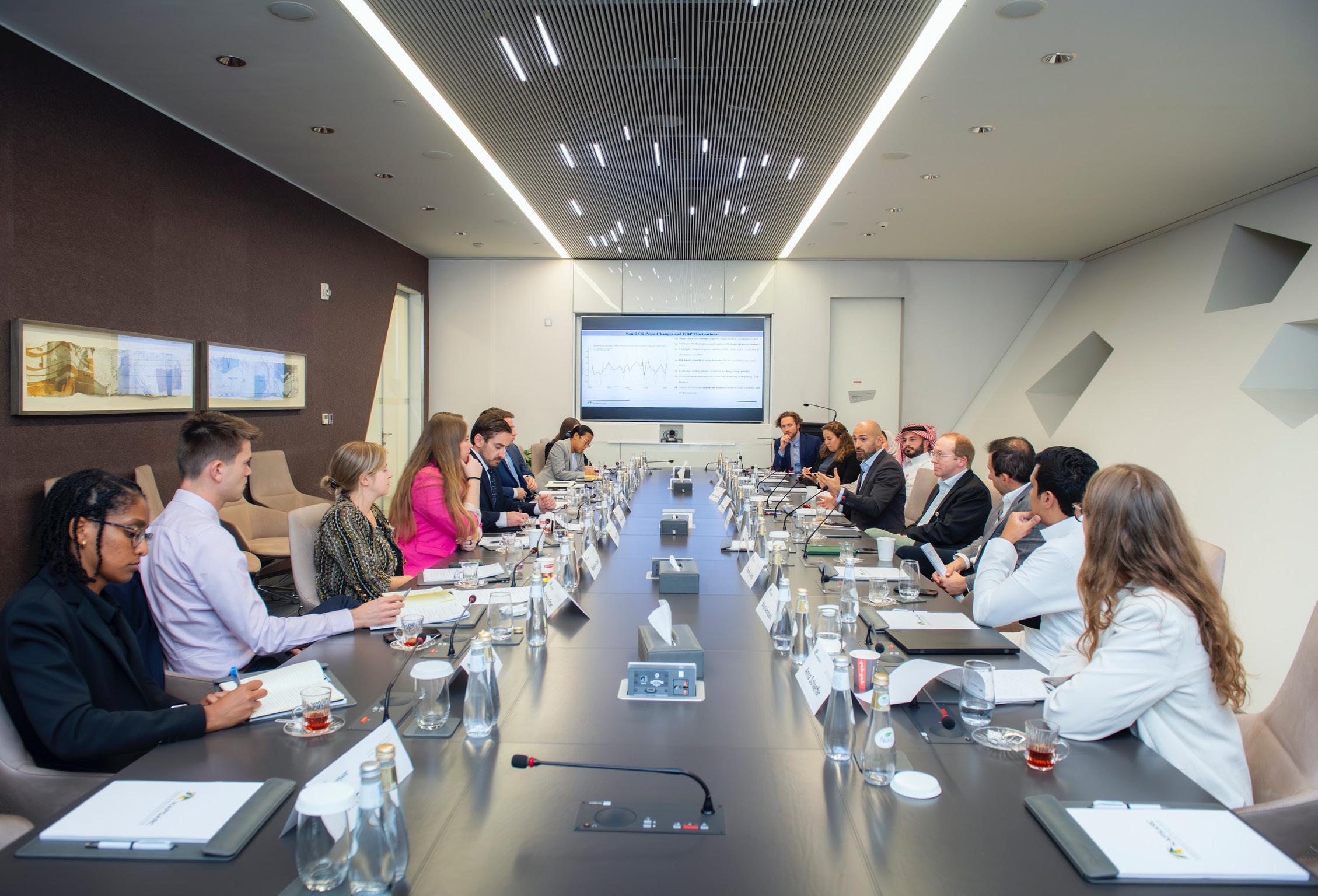
Authors meet with scholars at the King Abdullah Petroleum Studies and Research Center (KAPSARC).

Key takeaway: Cultural and public diplomacy remain integral to U.S.-Saudi relations, fostering people-to-people connections through educational exchanges, professional partnerships, and cultural initiatives that promote human capital development and mutual understanding.
Through the ebbs and flows of the U.S.-Saudi relationship, cultural diplomacy remained a cornerstone of the bilateral partnership. As the United States works to strengthen its partnership with Saudi Arabia—aiming to improve channels of communication and its image in a region that is, at best, hesitant and, at worst, overwhelmingly distrustful of U.S. influence—people-to-people connections are pivotal.85 These nongovernmental ties are essential for bolstering reputational security and human capital, both of which are critical to advancing broader social, energy, and technology goals. By investing in Saudi human capital—reducing unemployment, fortifying the economy, and cultivating a vibrant cultural scene—the United States not only strengthens its partner but also can push the Kingdom to align with U.S. values. This in turn contributes to regional stability and advances U.S. foreign policy objectives.
Educational exchanges between Saudi Arabia and the United States fostered a generation of leaders whose influence extends to the highest levels of the Saudi government, with U.S.-educated officials occupying key roles, such as the Foreign Minister and Ambassador to the United States.86,87 Over 700,000 Saudis have studied in the United States, and while the number of Saudi students studying in the United States has fallen in recent years as the Kingdom prioritizes sending students to only the top U.S. universities, thousands continue to do so and go on to fill prominent government positions.88,89 Programs like Fulbright are also expanding to deepen bilateral ties, with plans to increase the number of U.S. students conducting research in Saudi Arabia in the coming years.90 Saudi Arabia’s reputation as a stable and safe destination for linguistic and cultural exchanges positions it as an increasingly attractive alternative to regional competitors. Yet, public diplomacy through exchanges faces challenges. While Saudi Arabia launched programs to increase reciprocal exchanges, U.S. students remain hesitant to study long-term in the Kingdom, often opting for shorter
visits or semester-long programs due in part to the relative newness of these opportunities. Additionally, stagnant funding for U.S.-based exchange programs, such as the State Department’s International Visitor Leadership Program, limits their potential. Capacity-building goals in newer sectors like tourism and cultural industries may also outpace Saudi institutional readiness, creating a gap in achieving Vision 2030 objectives.
Given these challenges, the United States should seek mutually beneficial partnerships that combine Saudi funding with U.S. institutional expertise. Examples include collaborations between vocational schools and Saudi educational institutions, training programs for college counselors, and projects focused on cultural diplomacy, such as arts-focused initiatives at institutions like the Kennedy Center.91 Expanding university partnerships, similar to Arizona State University’s new campus in Saudi Arabia, could also further educational and professional exchanges.92
Saudi Arabia’s decision to open the country to expand its tourism and entertainment sectors offers areas for increased cultural exchange. The ensuing cultural reform efforts (e.g., lifting the ban on cinemas, reducing gender segregation in restaurants) reflect the Kingdom’s broader goals of transforming its society, in part aligning more closely with Western cultural norms.93 Additionally, major investments into high-profile events like the 2022 debut of LIV Golf and the Kingdom’s successful bid to host the 2034 FIFA Men’s World Cup position Saudi Arabia to attract a greater international audience.94 However, these reforms and investments are not without controversy. Accusations of “sportswashing” and questions about the financial, environmental, and social stability of these investments raise concerns among investors, foreign partners, and human rights groups.95,96 Despite these challenges, Saudi Arabia’s interest in these sectors offers new avenues for cultural exchange and opportunities for the United States to engage in diplomatic efforts that support stable and sustainable change in Saudi Arabia.
Vision 2030 highlights sports—from soccer teams to individual exercise—as a cornerstone of physical and societal health, offering significant opportunities for U.S.-Saudi sports diplomacy. Programs like the State Department’s Global Sports Mentoring Program, in partnership with ESPN, can empower Saudi women in sports while fostering cross-cultural connections.97

Unlike larger-scale sporting investments criticized as sportswashing, these initiatives focus on youth engagement and capacity building, emphasizing tangible, long-term impact.
Esports have also garnered popularity in the Kingdom in recent years, with an estimated 67 percent of its population involved in gaming in some capacity.98 The sector is projected to contribute over $13 billion to the economy by 2030.99 Gaming is an effective channel for cultural diplomacy with the potential to reach a large swath of the Saudi youth population who may otherwise not engage with a U.S. audience. A new State Department initiative or partnerships between U.S. and Saudi enterprises in gaming could utilize U.S. industry know-how and extend the impact of cultural diplomacy into this growing field.
Congressional Delegations, or CODELs, inform the legislative process through hands-on experience interacting with international policymakers, business owners, and students.100 By engaging directly with Saudi business leaders, youth, and government officials, these visits can demonstrate U.S. commitment to the bilateral relationship while building familiarity with the opportunities for collaboration. Such efforts may mitigate reputational concerns and outdated perceptions. They may also equip U.S. policymakers with nuanced insights to inform legislation and collaboration in the bilateral relationship across strategic sectors.

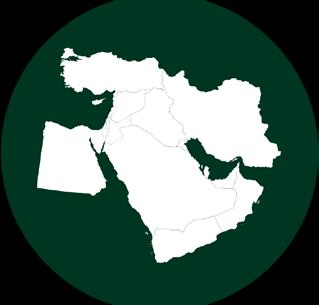

Saudi Arabia remains a critical U.S. partner, but its evolving foreign policy under MBS introduces both opportunities and challenges. The Kingdom’s relatively recent assertive interventions, growing ties with China and others, and its ambitious Vision 2030 agenda reflect a dual pursuit of regional integration and global influence. While tensions over human rights and shifting partnerships complicate the bilateral relationship, Saudi Arabia’s efforts to diversify its economy, stabilize the region, and reform domestic structures align with key U.S. strategic interests. Recent setbacks, such as the stalled U.S.-Saudi-Israel “megadeal,” highlight regional volatility but also underline the need for sustained, adaptable engagement. The United States should prioritize strengthening its partnership with Saudi Arabia through public diplomacy, capacity building, and strategic collaboration, leveraging shared goals to promote regional stability and mutual growth in an increasingly multipolar world.
Leverage Saudi Arabia’s Strategic Interests to Advance U.S. Goals: If the next administration chooses to pursue a U.S.-Saudi-Israel megadeal, the United States should leverage Saudi strategic priorities to advance human rights, such as through judicial reform and promoting civil liberties, and establish limits on Chinese involvement in critical sectors to protect U.S. national security interests.
Cooperate on Regional Stabilization and Reconstruction Efforts: The United States should cooperate with Saudi Arabia on regional stabilization by supporting diplomatic efforts to de-escalate conflicts, financing post-conflict reconstruction, and promoting greater regional integration.
Prioritize Human Capacity Building: U.S. public diplomacy in Saudi Arabia should prioritize human capacity building by expanding two-way exchange programs, fostering vocational and higher education partnerships, and promoting sports initiatives that enhance mutual understanding and economic development.


While Vision 2030 provides a robust framework to diversify Saudi Arabia’s economy from its primary dependence on oil, energy in many forms, including oil, will continue to be critical to Saudi Arabia’s economic and geopolitical goals. Oil will continue to be a key export, while growing investment in clean energy sources hedges against a future decline in oil demand. Renewable energy sources such as wind and solar hold strong potential in Saudi Arabia, particularly for domestic grid decarbonization, but progress has been slow. The Kingdom is also interested in pursuing traditional nuclear energy, but has yet to sign a nuclear agreement with the United States. Finally, clean hydrogen has the potential to become a valuable export, contingent upon global demand. Each of these energy sectors are relevant to U.S. geopolitical and economic interests given the Kingdom’s influence in energy markets.

Key takeaway: Oil will remain a key export of Saudi Arabia for at least the next two decades, with the Kingdom’s low-cost production, vast reserves, and political leadership of OPEC giving it significant market power. However, U.S. shale production is challenging the Kingdom’s role as a swing producer in the oil market.
Oil, the original cornerstone of the U.S.-Saudi bilateral relationship, propelled the Kingdom’s growth and supported its citizens since it was first discovered in Dammam in 1938.101 Saudi Arabia’s low cost of oil production has resulted in enormous profits from oil sales and left it well-positioned to drill so long as there is demand for oil.102 The global economy will likely depend on oil through 2050, and Saudi Arabia’s oil market remains the foundation of the country’s fiscal health and economic strategy. Riyadh aims to leverage its cheap production capabilities to support reliable and promising revenue streams in petrochemical and EV manufacturing.103,104 In preparation of a future decline in oil demand, there are opportunities for the U.S. government and private sector to work with Saudi Arabia on innovative early stage frameworks, like the circular carbon economy.
Saudi Arabia is the world’s second largest oil producer behind only the United States, and considered to be the most powerful player in the oil market through its defacto leadership of OPEC.105 OPEC produces 40 percent of global oil supply, and Saudi Arabia is the highest capacity producer.106 These endowments make it a swing producer, allowing it to heavily influence the price of oil in the global market.107 In addition to vast reserves, Saudi Arabia produces oil more cheaply than anyone else, at an estimated $3-10 per barrel, giving Saudi Arabia significant leverage over the international oil market (for comparison, U.S. shale oil averages a $45 per barrel breakeven price).108,109 While OPEC’s mavrket share has declined, preventing it from imposing an embargo as it did against the United States in 1973, it can still impact economies by increasing or curtailing production. In general, Saudi Arabia carefully manages its production to ensure prices remain high enough to fund its budget without depressing global demand.110 As the influential swing producer, Saudi Arabia historically has curtailed production far more than other OPEC members to deter defection.111
The rapid rise of U.S. shale oil is challenging OPEC, and thus Saudi Arabia’s role as the swing producer in the oil market, straining the bilateral relationship.112,113 President-elect Trump has pledged to facilitate boosting U.S. shale oil production, with federal officials projecting U.S. outputs are on track to average 13.5 million barrels a day (mb/d), nearly 50 percent higher than Saudi Arabia’s October 2024 output.114 However, ramping up U.S. shale production to these levels will not be a simple endeavor, given private U.S. shale firms profit incentives to drill less unless prices spike.115 Both Saudi Arabia and the United States face relative unknowns regarding the other’s intentions in oil production, complicated by divergent political and private sector interests, creating a risk for future fissures in the bilateral relationship given the importance of the global oil market.116,117
The medium-term outlook for oil demand will impact Saudi Arabia’s fiscal position and its capacity to achieve the goals laid out by Vision 2030. However, industry analysts disagree on demand projections. OPEC projects rising global oil demand until 2050, while the International Energy Agency projects demand peaking in 2030. Others predict a peak occurring sometime between 2030 and 2035.118,119,120,121 There is uncertainty in oil demand projections because of (1) economic growth in China, which heavily relies on Saudi crude, and in other emerging markets, (2) the effectiveness of fuel economy standards, and (3) the global uptake of electric vehicles (EVs), among others.122,123 The Energy Information Agency’s short-term outlook projects that, along current trends, the Brent crude oil spot price will remain stable around $74 a barrel through 2025.124
Regardless of differing projections for global demand, Saudi Arabia is also leveraging its cheap oil production capacity to spur growth in its petrochemical and manufacturing industries. Saudi Arabia’s cheap oil positions petrochemicals as Saudi Arabia’s most competitive manufacturing industry. Even as global oil demand levels out, Saudi Arabia aims to grow its petrochemical and derivative plastics manufacturing, which will provide a modest domestic demand for its oil reserves. If the Kingdom can entice private investment in the industry, they can more feasibly ease historically high domestic subsidies on oil to stimulate revenue.
Expanding into other manufacturing sectors will require intense process heat that renewable resources struggle to provide.125 Therefore, Saudi Arabia may require other

types of energy including nuclear, hydrogen, geothermal and solar concentrate to support manufacturing heat requirements. Hydrogen is most promising for petrochemicals, but will require plants to switch furnace technologies.126,127,128 In the interim, manufacturing processes will demand crude as a source of process heat.
The United States can advance its climate mitigation goals by expanding efforts to improve Saudi Arabia’s carbon capture and storage (CCS) and direct air capture technologies to limit emissions associated with oil production and oil-intensive manufacturing. The Kingdom aims to use oil in a more sustainable way to encourage greater FDI inflows by implementing its Circular Carbon Economy (CCE) framework.129 This framework will reduce, recycle, reuse, and remove carbon to create a closed loop system for carbon usage. Examples of more sustainable oil use include creating more efficient and less energy-intensive production processes and improving carbon capture and storage (CCS) technologies. However, expensive capital, lagging CCS and direct air capture (DAC) technologies, and carbon leak risks have hindered its efforts so far.130,131 To mitigate these challenges, in 2024, the U.S. Department of Energy (DOE) signed three memorandums of understanding (MOUs) between Aramco and American companies on joint technology testing of DAC and heat batteries.132 The U.S. should continue to partner with the Kingdom on CCS research and development, aligning U.S. interests in climate mitigation with Saudi priorities for sustainable hydrocarbon use.
Key takeaway: Saudi Arabia has ambitious plans to decarbonize its domestic electricity production through renewable energy sources, notably solar, wind, and geothermal, however this implementation is occurring slowly. China maintains a strong advantage in solar energy partnerships, but less so in geothermal and biofuels.
Renewable energy is increasingly important to the energy diplomacy of both the United States and Saudi Arabia. In 2024, representatives from the U.S. DOE met with Saudi Arabia’s Minister of Energy to build on the Partnership Framework for Advancing Clean Energy, first announced as part of the Jeddah Communique in 2022.133 The roadmap for cooperation included knowledge exchange, regulatory reform, joint research and development, and human capital expansion.

Saudi Arabia has continuously revised its renewable energy goals, including solar, wind, and geothermal, since the release of Vision 2030. The initial target of 9.5 GW has now risen to 130 GW, and the country aims to source at least 50 percent of power from renewables by 2030. Renewable deployment aligns with both domestic diversification efforts and international climate priorities. Despite this, the Kingdom has yet to successfully deploy renewables at scale, with renewable energy currently accounting for less than one percent of the country’s electricity generation.134
Saudi Arabia’s natural endowment extends beyond oil and gas to a prime location along the world’s sun belt.135 According to the World Bank, Saudi Arabia has some of the highest practical photovoltaic potential in the world.136 There are also high wind speeds and promising capacity factors across several regions, with onshore potential as high as 200 GW.137 While the Kingdom has high ambitions for solar and wind energy, from powering giga-projects to scaling green hydrogen, the pace of investment is advancing slowly.138
Challenges to the expansion of renewable energy include workforce development lags, limited incentives for decentralized household production, and continued regulatory angst.139,140 The government has made strides to encourage investment, like implementing competitive procurement procedures, but these efforts have yet to yield major changes in the energy mix.141 The 400MW Dumat Al-Jandal project is the Kingdom’s only utility-scale wind farm in operation to-date.142 However, several large wind projects are in the planning phase, including the country’s first offshore farm.143 As grid and storage technology advance, more capacity may come online.
Saudi Arabia is investing not only in installation, but across the renewable energy supply chain. The PIF recently announced intentions to localize 75 percent of the production of the components in renewable projects by 2030.144 This increasing localization aligns with the country’s aspirations to bolster manufacturing and export renewable energy to other countries in the region.145 However, economic collaborations go beyond regional energy pacts; many of the manufacturing projects being announced are in cooperation with Chinese firms, as exemplified by Chinese Energy Engineering signing a nearly $1 billion contract to build a solar plant in the Kingdom.146,147 This signals an important trade expansion between the two countries and reflects the continued global dominance of China in solar energy.148,149 If the United States seeks to bolster clean-energy partnerships outside of

China, U.S. policymakers may consider fostering similar partnerships with Saudi Arabia.150 However, U.S. industry may struggle to compete against China’s dominance in solar technology exports and therefore should focus on areas in which the United States is more competitive, like geothermal energy.
The United States, a leader in geothermal installation, should provide technical assistance and pursue partnerships with Saudi firms to support geothermal expansion in Saudi Arabia, which would contribute to Saudi Arabia’s renewable goals.151 Unlike wind and solar, geothermal provides a reliable base load source of energy with a relatively small surface footprint. However, commercial scale expansion is limited by the relatively high costs of geothermal investment. American companies could also pursue partnerships such as the one between TAQA and Iceland’s Reykjavik Geothermal, aimed at initiating geothermal projects of up to 1GW.152
Biofuel technology is another area for potential collaboration between the United States and Saudi Arabia. The Kingdom’s only biofuel producer, the Biofuel Company, announced plans to triple refining capacity to 36 million liters, opening new sites in Jeddah and Riyadh.153 The biofuel industry is expected to grow further as the International Maritime Organization transforms global shipping standards, with biofuel as a “green” shipping fuel.154
Significantly scaling renewable electricity in Saudi Arabia will require substantial investments in new T&D infrastructure, because wind and solar assets will not be co-located with existing infrastructure which was designed to transport electricity generated with oil. New infrastructure requirements will be even greater if Saudi Arabia wishes to export renewable energy to its neighbors via high-voltage interconnectors, like the proposed EgyptSaudi project.155 American companies could stand to play a role in these expansions.
Key takeaway: Saudi Arabia is actively pursuing civilian nuclear energy to decarbonize its electricity grid, but has not yet selected a vendor. U.S. policymakers face a critical decision on whether to engage Saudi Arabia’s civilian nuclear ambitions, balancing nonproliferation risks against strategic concerns of losing influence to competitors like China and Russia.
Beginning in 2010 with a royal decree, Saudi Arabia began developing a civilian nuclear energy program to diversify its energy mix and as a key source of zero-emissions electricity, in cooperation with the International Atomic Energy Agency (IAEA).156 The Kingdom has expressed interest in acquiring nuclear energy technology from the United States, a critical point in negotiations over a potential U.S.Saudi-Israel deal. However, the United States has remained hesitant to formalize nuclear technology cooperation via a “123 Agreement” due to a lack of Saudi commitment to forswear domestic uranium enrichment and reprocessing rights, pillars of U.S. nonproliferation standards.157 Meanwhile, Saudi Arabia has engaged with other countries, including South Korea, China, and Russia, to advance its nuclear ambitions, raising questions about the strategic implications of U.S. disengagement and who would fill this role.158
As the Kingdom makes slow, but steady progress toward realizing its nuclear energy goals, an incoming U.S. administration will face pivotal decisions about the level and nature of support, if any, to extend to an imminent Saudi nuclear energy program.
Nuclear energy is the process of inducing fission in uranium atoms to generate energy, which then heats a reactor’s cooling agent to produce steam, spin turbines, and generate low-carbon electricity.159 While nuclear energy provides approximately nine percent of the world’s total electricity, it is nearly 25 percent of the world’s low-carbon electricity.160 After COP29 in 2024, more than 30 countries pledged to triple their nuclear energy capacity by 2050 to reach global decarbonization targets, both through the adoption of small modular reactors (SMRs) and traditional large reactor nuclear power plants (NPP).161 Civilian nuclear energy programs can be challenging due to extremely high up-front capital costs, licensing and regulation approvals, long lead times and construction delays, high operating costs, and safety and security concerns.162 Furthermore, nuclear commerce is a highly geopolitical endeavor, a multi-decade process that


generally strengthens ties between the supplier and the host state.163
With growing energy demands, Saudi Arabia has demonstrated continued interest in diversifying its energy mix through the adoption of a civilian nuclear energy program. Currently, the United Arab Emirates (UAE) is the only country in the Middle East with a civilian nuclear energy program, with a capacity of 5600 MW or 25 percent of the UAE’s current electricity needs, at the Barakah NPP.164 While the UAE worked with South Korea to build the reactors, the United States also provided technical consultations, given the 123 Agreement in place. Elsewhere in the region, Egypt and Turkey both have MOUs with Russia’s Rosatom for traditional reactors.165
In 2017, the Saudi government began a formal bidding process with potential international companies for reactor construction, however, it extended the formal bidding process several times. Until now, technical bids have been invited from China’s National Nuclear Corporation of China, France’s Électricité de France, Russia’s Rosatom, and Korea’s Korea Electric Power Corporation. Westinghouse, a leading U.S. company, was excluded from the bidding process largely due to the lack of a bilateral nuclear cooperation agreement in place between the United States and Saudi Arabia.166
In 2023, the Kingdom reiterated its plans to develop “peaceful uses for nuclear energy across various fields,” including building a NPP to help meet sustainable development requirements as outlined in Vision 2030.167 Working with the IAEA, the Kingdom is progressing on implementing a full Comprehensive Safeguards Agreement (CSA), as required by all non-nuclear weapons states party to the nuclear non-proliferation treaty (NPT).168 The Kingdom recently transitioned from the Small Quantities Protocol to a CSA, signaling the Kingdom’s continued commitment to transparently advancing nuclear energy ambitions.
Saudi Arabia consistently expresses interest in acquiring nuclear energy technology and expertise from the United States. However, the Kingdom has also been forthcoming about its interest in pursuing a full-fuel cycle, meaning the production, enrichment, and reprocessing of uranium. As recently as January 2023, the Saudi Energy Minister stated that the Kingdom intends to use its domestic uranium resources for producing low enriched uranium (LEU).169
Domestic enrichment and reprocessing is not compliant with the United States’ “gold standard” of nonproliferation norms, which has contributed to the lack of a mutually agreeable U.S.-Saudi civil nuclear cooperation agreement, as required by section 123 of the 1954 Atomic Energy Act. The United States has reportedly considered a U.S.run uranium enrichment operation in Saudi Arabia as a middle ground, or a delayed decision (such as a tenyear moratorium) on domestic enrichment, with others critiquing this as deferring action.170
While Saudi Arabia is party to the NPT and therefore legally bound to not pursue nuclear weapons, in 2018 the government stated that if Iran were to obtain a nuclear weapon, the Kingdom would “follow suit as soon as possible.”171 This clearly stated risk presents a challenge to the United States, as it decides what level of support to lend to the Kingdom’s nuclear energy ambitions. Some experts emphasize the need for continued technical and strategic involvement to limit enrichment and reprocessing risks, arguing that decoupling could strengthen Saudi Arabia’s ties with strategic competitors and reduce U.S. leverage, while others believe the risk of abandoning nonproliferation standards far outweighs any strategic gains.172,173,174
Balancing geopolitical, nonproliferation, and economic considerations, a civilian nuclear deal could also help revitalize a slowing U.S. nuclear industry. Nuclear energy will remain important for U.S. policymakers to consider as the United States seeks to lead in future SMR exports, in addition to large reactors. These decisions will carry far-reaching implications for regional security, nonproliferation norms, and the evolving geopolitical landscape.
Key takeaway: Saudi Arabia has a competitive edge in low-carbon hydrogen production, which positions it as both a potential strategic partner and rival to the United States in global hydrogen markets. However, the future of global demand for hydrogen remains uncertain.
The use of hydrogen in industry has been widespread with demand in 2023 at 97 million tons per annum. Today, the most common uses of hydrogen are in refining (i.e., reducing the sulfur content of fuels) and chemical production (e.g. ammonia).175 Approximately 80 percent of global hydrogen is produced onsite, rather than traded.176 Saudi Arabia is already a major producer and consumer of

hydrogen given the presence of large refineries and some ammonia production in the country.177
Low-carbon hydrogen technologies have a potentially large role to play in the global energy transition. There are three techniques for the low-carbon production of hydrogen: “green” hydrogen, produced via the electrolysis of water and powered by renewable energy; “pink” hydrogen, using the same technology but with a nuclear energy source; and “blue” hydrogen, using traditional steam methane reformation but in conjunction with CCUS. Initial projections forecast that hydrogen could extend beyond traditional uses, including as a source of process heat in industry, as a fuel source for light and heavy vehicles, and as a way to “firm” electrical grids.178
Despite the potential, expectations for the global hydrogen market have fallen in recent years. For instance, McKinsey’s latest analysis suggested hydrogen demand in 2050 to be 10-25 percent lower than anticipated the year prior, due to decreased expectations for use in home heating, light vehicle transportation, and air fuels.179 Lowcarbon hydrogen is now assessed as unlikely to become a dominant energy source in any use cases in which it is not already dominant (i.e., refining and chemical production), though it could still become a significant energy source for other use cases such as shipping and jet fuels, steel production, long-duration energy storage and as a synthetic chemical feedstock.180
Despite uncertainties in demand, hydrogen is a major pillar of Saudi Arabia’s low-carbon industrial strategy, with the Kingdom placing significant focus on the production of low-carbon hydrogen. The planned green hydrogen plant at NEOM promises to be the largest in the world, and the Kingdom has expressed an ambition to obtain 15 percent of world production of blue hydrogen.181,182
Production costs for low-carbon hydrogen in Saudi Arabia are likely to be low, given its comparative advantage in renewable energy resources. The Kingdom’s abundant renewable resources described above (electricity makes up approximately 40-50 percent of levelized cost) mean that production of green hydrogen in the Kingdom is currently estimated at $2.16/kg of hydrogen, rendering it highly competitive.183 For comparison, the cheapest zero-carbon technology in the United States is currently estimated at $3.07-$3.86/kg, though Inflation Reduction Act (IRA) subsidies could take this below
the cost of Saudi Arabia’s production.184 The Kingdom’s abundant natural gas resources and existing capability for producing “gray” hydrogen (traditional carbon-intensive production that releases carbon dioxide) could also enable it to produce very cheap blue hydrogen by adding CCUS facilities to existing plants. Infrastructure will also help, as extensive gas export terminals near the Strait of Hormuz and the proposed megaplant at NEOM mean that Saudi Arabia may either already have suitable infrastructure, or the expertise to be able to construct it more easily than competitors. This helps position the Kingdom to remain as a strategic energy exporter should oil demand decrease.
While Saudi Arabia has a comparative advantage in hydrogen production, it also faces significant competition in a global market, including from the United States. Many countries have set out roadmaps for national hydrogen production strategies.185 Global demand for traded hydrogen is anticipated to be highest in Europe and East Asia, potential areas of export. Within the region, the UAE, Morocco, and Egypt have all announced plans for large-scale hydrogen production, relying on similar potential strengths as Saudi Arabia.186 The locations of Egypt and Morocco, closer to key customers in Europe, may make Saudi Arabia less competitive in the European market. Similarly, hydrogen production has become an energy transition priority for the United States, where a $3/kg tax credit for the lowest-carbon production was established under the IRA.187
While U.S. companies might benefit from investments in the hydrogen sector in Saudi Arabia, the Kingdom also represents a competitive threat to U.S. production. A key objective of the IRA is to incentivize domestic hydrogen production through a subsidized reduction in the cost of production in the United States. As a result, Saudi Arabia and the United States may compete for the same international customers. In 2023, Saudi Arabia completed eight successful trade pilots, of which six involved transport to Asia.188 This is an early indicator that trade with Asia may be seen as a more viable hydrogen strategy for the Kingdom. However, policymakers should bear in mind that a greater number of successful hydrogen projects in Saudi Arabia could mean fewer projects, and therefore fewer jobs, in the United States.


Despite U.S. oil production sharply increasing in recent decades, Saudi Arabia’s vast oil reserves and influence on the global market mean that oil remains central to the U.S.-Saudi relationship. Furthermore, the broader world of energy is also in the process of a profound transformation, requiring robust partnerships between countries and industries. The next four years are likely to bring instability in world oil prices, as Trump administration policies and OPEC production plans clash, coupled with uncertainties in electric vehicle demand. Engagement with Saudi Arabia and OPEC could allow the United States to exert greater influence on world oil markets in this context. Similarly, the United States and Saudi Arabia may become competitors in the emerging global hydrogen market—active engagement on this topic could avoid a situation where Saudi Arabia’s production undercuts American jobs. At the same time, low-carbon energy technologies present opportunities for American
businesses to launch new ventures inside the Kingdom. Given the current lack of U.S. exports, renewable energy supply chains are unlikely to include U.S. companies unless the administration makes this a priority. Nuclear energy remains an important area of future cooperation due to the potential export of U.S. SMR technology, regardless of Saudi Arabia’s vendor selection for its traditional reactor build. Should the United States be able to secure commitments from the Kingdom, such deals could be worth billions of dollars to U.S. companies, as well as contribute to bolstering energy security.




Utilize Energy Dialogues for Oil Diplomacy: Saudi policymakers are likely to react negatively to proposed administration policies to encourage higher oil production in the United States. It is critical that U.S. policymakers utilize existing bilateral and multilateral energy dialogues to discuss policy changes, as ignoring the reaction could lead to negative spillover into other areas of U.S.Saudi cooperation.
Invest in Joint Research on Carbon Capture and Storage Technologies: Continue facilitating partnerships between governments, academic institutions, and private businesses to drive innovation in direct air capture, carbon capture and underground storage, and improving next-generation battery technology. Improving these technologies aligns with Saudi priorities on clean hydrocarbon use and U.S. emissions reduction goals, offering mutual environmental benefits.
Encourage Commercial Partnership in Gas and Renewable Energy: U.S. policymakers should facilitate partnerships with U.S. businesses in Saudi Arabia where feasible. Areas where U.S. businesses have strong experience – such as gas supply chains, geothermal energy and T&D infrastructure – should be prioritized. Renewable energy projects and supply chains, though more of a stretch due to China’s sectoral dominance, could also be an ambition.
Continue to Negotiate a Civil Nuclear 123 Agreement: U.S. policymakers should continue to negotiate a civil nuclear energy “123 Agreement” that upholds safety, security, and nonproliferation norms. In turn, the U.S. nuclear industry could provide technical and regulatory assistance to the Kingdom.

Saudi Arabia is emerging as a global hub for innovation and technology, driven by Vision 2030’s ambitious goal of increasing the technology sector’s contribution to GDP from one to five percent.189 The Kingdom’s growing technology sector and substantial investments in artificial intelligence and critical mineral supply chains demonstrate its commitment to diversifying beyond traditional revenue streams.190 Against the backdrop of great power competition between the United States and China, Saudi Arabia’s collaborations with both countries highlight the opportunity for the United States to strengthen bilateral cooperation with the Kingdom and curb malign foreign influence in emerging technology sectors.191


Key Takeaway: By focusing on artificial intelligence, data centers, and semiconductors, Saudi Arabia seeks to position itself as a regional technology powerhouse that is willing to hedge between the U.S. and China. While economically beneficial, these technologies could also facilitate increased digital authoritarianism in the Kingdom.
Saudi Arabia is heavily investing in artificial intelligence (AI) and large-scale data centers, which are projected to contribute over $135.2 billion to the Saudi economy by 2030, supporting its ambition to become a global technology hub. Recently, the Kingdom announced a $100 billion initiative called Project Transcendence, aimed at establishing itself in AI, data analytics, and advanced technology.192,193 Saudi Arabia, while keen on hosting data centers for international technology companies, aims to also develop new technologies, Arabic-language AI models, and ultimately export developed AI technology. AI and high-end semiconductor chips are at the heart of the U.S.-China technology competition, and will likely be a main area of focus for the incoming Trump administration. U.S. policy should aim to minimize the risks posed by geopolitical tensions, communicate export control decisions, and align technical standards, encouraging Saudi Arabia to prioritize collaboration with the United States over China, given the Kingdom’s current incentives to engage with both.
Saudi Arabia is well-positioned to host large data centers for technology companies interested in taking advantage of the Kingdom’s spacious land, affordable and reliable energy, and desire to become a bigger player in advanced technology. Data centers are a critical infrastructure underpinning much of today’s digital economy, as they host private cloud applications for businesses, process big data and power machine learning and AI, support high-volume eCommerce platforms, and more.194 Data centers require consistent and reliable power, cooling infrastructure, and additional designs based on their intended use.
Domestic demand is also rising as Saudi Arabia advances into high-tech industries such as EVs, helicopters, and drones, which require significant numbers of semiconductors.195 Saudi Arabia has launched a National
Semiconductor Hub to attract international chipmakers, with the goal of 50 semiconductor design companies setting up business in the Kingdom by 2030.196
Saudi Arabia will need to build partnerships with leading technology companies to advance in AI, rather than relying solely on indigenous development, given current skilled labor constraints. Towards this goal, in October 2024, Google and the PIF announced a strategic partnership to establish a new AI hub in Saudi Arabia.197 The partnership aims to bolster the Kingdom’s information and communication technology sector (ICT) by 50 percent and develop a skilled AI workforce including students and professionals. Joint research will focus on Arabic language models and AI applications. Experts estimate the new AI hub could contribute over $70 billion to the Kingdom’s GDP over the next eight years.198
The Google-PIF deal also emphasizes and prioritizes upskilling the local workforce. One stated goal is to train 5,000 engineers in chip design by 2030.199 The strong emphasis on workforce development signals the Kingdom’s determined push to invest in the groundwork and talent needed to become a key player in what could turn into an AI cluster in the Middle East, and subsequently compete with the UAE to become the region’s technology superpower.200,201,202 The partnership also recognizes the energy advantages in the region, attracting not just Google, but other large technology companies such as Microsoft, Nvidia, and Amazon.
While the Google-PIF partnership is significant in scope, it differs substantially from the G42-Microsoft deal with the UAE. The deal does not transfer model weights, which govern how models behave, or co-create non-commercially available AI technology, nor does it involve proprietary transfers.203,204 These limitations signal leading U.S. technology companies are taking cautious steps forward as the U.S.-Saudi bilateral relationship expands beyond energy to emerging technologies. Given the national security implications of AI, data centers, and semiconductor chips, U.S. companies will closely follow rapidly changing export controls and foreign investment reviews related to the hardware and software underpinning AI.
There was once a belief, accelerated by the early months of the Arab Spring, that technology could play a role in democratization and greater connectivity would

weaken authoritarian control over populations through information sharing, organizing, and limiting capacity for repression and control.205 Instead, a new area of digital authoritarianism has emerged in the form of facial recognition systems, disinformation campaigns, advanced biometrics, civilian surveillance, and suppression of dissenting voices on social media.
China is a global leader in digital authoritarianism through its Digital Silk Road Initiative, to which Saudi Arabia was an early signee.206 Saudi Arabia has used filtering software to block websites related to human rights and news networks from countries they are in conflict with, such as Qatar and Iran.207 Saudi Arabia also used networks of X, formerly Twitter, bots to push pro-Saudi talking points in the aftermath of the murder of Jamal Khashoggi, and has the second highest number of accounts removed by X after China.208 Saudi Arabia reportedly uses Pegasus spyware from an Israeli company that allows them to infiltrate mobile devices and remotely turn phones into audio and video recording devices.209 NEOM is advertised as a smart city and if completed as planned, will become a model for urban surveillance with mass amounts of data collection from its inhabitants.210
In the context of AI and quickly-evolving digital technologies, it is noteworthy that Saudi Arabia has shown a distinct willingness to leverage these technologies to carry out more authoritarian activities. This is a consideration private and government partners, especially U.S. policymakers, should carefully assess when supporting the development and proliferation of these technologies, establishing guardrails and clear rules of the road where appropriate.
As Saudi Arabia pursues a larger role in the development of AI, it finds itself in the middle of the U.S.-China technology competition. The United States’ primary tool for managing the AI competition with China is export controls to restrict Chinese companies from obtaining advanced semiconductors and chip-making equipment. Any partnership between U.S. and Saudi counterparts is highly likely to include elements that attempt to curb Chinese influence in Saudi Arabia, particularly in high-tech and defense sectors relevant to U.S. security interests.211
While Saudi Arabia has publicly signaled a preference for alignment with the United States on AI technology, it has simultaneously pursued a more flexible, noncommittal strategy between the United States and China. Leveraging its financial resources, the Kingdom maintains
relationships with both American and Chinese entities, continuing to attract businesses that will ultimately help the Kingdom expand a competitive domestic technology sector. U.S. policymakers should be cognizant that this non-aligned strategy positions Saudi Arabia as a pivotal and influential player in the global competition for AI dominance.
Continued investment in Silicon Valley-based companies and venture capital firms, coupled with a preference for exclusive collaboration with the United States on AI technology, offers Saudi Arabia access to U.S.-made highend chips and partnerships with global technology leaders (e.g., Nvidia, Microsoft, IBM, and Intel). Continued U.S.-Saudi AI business partnerships would give the U.S. government greater assurances in its efforts to deter the transfer of sensitive AI technologies necessary for developing cutting-edge AI tools.212, 213, 214, 215, 216 However, given that U.S. restrictions have made it difficult for U.S. investors to invest in Chinese AI companies, Saudi Arabia has also demonstrated a willingness to make investments that attract Chinese technology companies to the Kingdom, and has demonstrated an openness to supporting an AI ecosystem not fully dominated by the United States.217,218
Key Takeaway: Through domestic and international investments, Saudi Arabia looks to secure global leadership in sourcing, processing, and refining critical minerals, positioning itself as a potentially vital partner for the United States as it looks to diversify supply chains from China.
As global powers set their sights on the clean energy transition, Saudi Arabia is working towards building a stake in the critical minerals sector to secure a promising new revenue stream, create jobs, and attract foreign investors.219 For the United States and its closest partners, this development presents a critical opportunity to diversify and de-risk critical mineral supply chains to reduce dependence on China’s near-absolute competitive advantage.220,221
Currently, China accounts for more than 60 percent of worldwide mineral production and 85 percent of processing capacity.222 Notably, certain minerals, such as those needed for critical technologies and infrastructures (e.g., F-35s, super-computing chips, EV batteries), have nearly 90 to 99 percent of their supply chain confined to China-based refineries.223 As China leverages export

controls over Western economies, Saudi Arabia seeks to play a role in this supply-chain diversification, acting as a conduit for Western economies reducing reliance on China, through international developments, as well as domestic sourcing and processing.224
The United States and its like-minded partners have welcomed Saudi Arabia’s focus on this emerging sector and growing portfolio of bilateral agreements, viewing it as a strategic opportunity to mitigate concerns about overdependence on China and subsequent energy security risks. However, Saudi Arabia needs to overcome significant hurdles if it hopes to challenge China’s dominance in minerals processing in the Middle East. These hurdles include accurate mapping of its domestic minerals reserves, uncertainty regarding global mineral demand and associated price volatility, long timetables to build mines, improvements to workforce talent, and more.225
Saudi Arabia claims significant deposits of aluminum, phosphate, gold, copper, uranium, and other raw minerals, and outlined an ambitious Vision 2030 plan to become a global leader in extracting and processing these critical minerals. 226,227 Recently, Saudi Arabia increased the evaluation of its domestic mineral resources from its 2016 estimate of $1.3 trillion to $2.5 trillion.228 To support its growing domestic industry, Saudi Arabia is expediting permitting processes to streamline FDI. Thus far, 700 active permits for exploration have been approved and more than $180 million in incentives seek to generate foreign interest. Incentives for exploration and extraction dovetail with $9 billion in joint ventures with Chinese, Indian, and Canadian processing companies.229 The balance of FDI in Saudi critical mineral processing will impact the security of U.S. supply chains and policymakers should consider ways to incentivize investment from friendly parties in the burgeoning Saudi market.230
Saudi Arabia’s untapped critical mineral reserves and desire to strengthen diplomatic and economic ties across Africa to challenge China’s dominance in the industry have led it to secure critical mineral rights in developing African nations.231 The Saudi Arabian Mining Company (Ma’aden) has partnered with the PIF to create a joint venture, Manara Minerals, which plans to invest over $15 billion in foreign mineral stakes, primarily in Namibia, Guinea, and the Democratic Republic of the Congo.232 Moreover, Saudi Arabia has signed MOUs with the Democratic Republic of the Congo, Egypt, and Morocco

to cooperate on mineral development.233 Saudi Arabia has also sought to establish stronger ties with Russia, exploring means to enhance cooperation of its mining sectors.234
As Saudi Arabia takes steps to develop its domestic mineral sector, its growing role in the global mineral supply chain presents an opportunity for the United States to encourage collaboration with international initiatives like the Minerals Security Partnership (MSP) and critical mineral trade agreements (CMAs). The United States, with key allies, founded the MSP to catalyze public and private investment in responsible critical minerals supply chains globally.235236 The United States should bring Saudi Arabia into the MSP to identify and align mutual priorities in this sector, encourage technical knowledge exchange, standards development, and incentivize joint investment.
The U.S. should also consider signing a critical minerals trade agreement to establish a tighter economic relationship with the Kingdom in this important sector.237 These agreements go beyond lowering tariffs on critical minerals: they qualify partners’ intermediate and final goods for U.S. IRA subsidies, incentivizing trade and investment that will strengthen the United States’ critical mineral supply chain.
Ultimately, the United States has a strategic interest in Saudi Arabia’s investments and international critical mineral partnerships, as these efforts would support the creation of more resilient supply chains and subsequently provide the United States with a promising partner in this critical resource area. By developing a domestic industry capable of importing raw materials and exporting said minerals into finished products, Saudi Arabia could secure the resources needed to stand up energy-intensive industries the global community needs (e.g., electric vehicles, nuclear energy). Successfully becoming a hub for processing raw materials would allow it to become a central player of minerals trade between Central Asia, Middle East, and Africa, as well as an alternative supplier for the United States.238,239
The bullish investments Saudi Arabia is making in the emerging technologies discussed in this chapter highlight the sectors they believe they can add significant value to and that would best complement their energy transition ambitions. By leveraging its land availability and reliable energy reserves and building strategic partnerships with industry leaders, Saudi Arabia has the potential to establish itself as an AI and data center powerhouse in the Gulf and beyond, and integrate itself into critical minerals supply chains. These developments would position the Kingdom to be a critical partner for the United States, particularly in



a rapidly evolving space where partnerships and standards are still in development. If the United States strays from proactively developing government and commercial partnerships that fail to more closely integrate the U.S. and Saudi sectors, or neglects to work with global partners to align and communicate export control decisions, it risks a critical opportunity to secure its interests in these highly influential emerging technologies. As a result, the United States could lose an influential partner to dominant strategic competitors like China, where Saudi Arabia is similarly exploring strategic partnerships.240
Strengthen Export Control Coordination with Allies: The United States should work proactively with allies to coordinate, manage, and communicate export control decisions to Saudi Arabia to ensure alignment of expectations on emerging technologies in which the United States holds a comparative advantage.
Establish Educational Exchanges on Artificial Intelligence: Encourage the United States and Saudi Arabia to establish short- and long-term educational and scientific exchange programs at U.S. universities with a focus on AI education and workforce development and relevant private sector entities in order to help Saudi Arabia build its domestic talent and strengthen Saudi’s commitments to U.S. technology over Chinese alternatives.
Formally Secure Shared Interests in Critical Minerals: Encourage Saudi Arabia to join the Minerals Security Partnership and formalize commercial and government ties, such as through a critical minerals trade agreement, to ensure security and stability of supply chains necessary for emerging technologies.
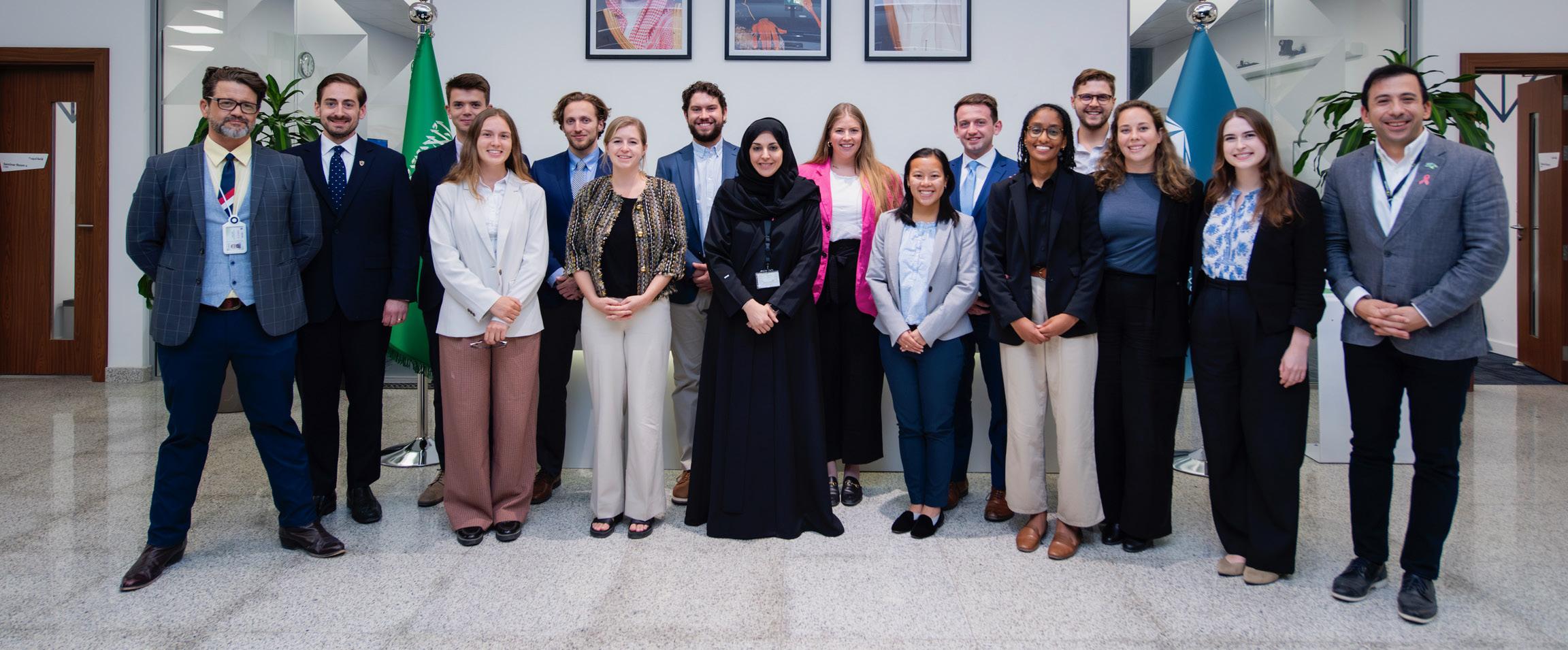


As the previous sections highlight, there are a range of sectors the United States and Saudi Arabia could partner on to strengthen their bilateral relationship. Saudi Arabia aims to increase such partnerships by expanding FDI inflows to $100 billion annually by 2030. These inflows would help the Kingdom bring in the skills and technology it currently lacks to achieve its Vision 2030 goals. So far, FDI inflows are well below Saudi Arabia’s 2030 target, likely a reflection of the Kingdom’s fraught regulatory and legal environment.241
U.S. policymakers have incentives to support a closer business relationship with the Kingdom. Such relationships are a form of soft power that could be used to advance U.S. regional and global interests. U.S. government officials could also use these business relationships to advocate for improvements in human rights within the Kingdom, an area of concern for U.S. policymakers and U.S. firms.242 As U.S. policymakers and firms consider forging stronger business relationships with the Kingdom, they should be mindful of evolving regulatory and legal risks as well as labor market challenges. Closely analyzing and supporting such developments will help protect U.S. business as well as regional and global interests.

Key Takeaway: While recent reforms may protect U.S. firms’ investments in Saudi Arabia, interested actors should continue to monitor regulatory and legal developments to properly assess risks of operating in the Kingdom.
Reforms that align the Kingdom’s regulations and judicial system with Western approaches are likely to attract greater FDI flows from Western firms.243 Recognizing this, Saudi Arabia has adopted a number of regulatory and judicial reforms to make the Kingdom more attractive to foreign investors.
Historically, foreign firms have cited concerns with Saudi Arabia’s regulatory environment as a major reason for caution in investing in the Kingdom. In general, these firms believe a lack of regulatory guardrails increases the operational and financial risks of operating in the Kingdom. Saudi Arabia enacted several regulatory measures to ease investors’ concerns. Most recently, in August 2024, the government passed a new investment law, which includes the following key provisions.244
• Foreign and domestic investors will be treated equally;
• Investments cannot be fully or partially confiscated or expropriated unless fairly compensated;
• Investors can transfer capital within or outside Saudi Arabia;
• Protection of investors’ intellectual property and trade secrets;
• Elimination of the current foreign investor
licensing system and tasking the Ministry of Investment with establishing a streamlined registration system for foreign investors; and
• Direction to the Ministry of Investment to create an arbitration system for settling disputes between the government and foreign firms.
The new investment law is a positive step towards increasing investors’ rights, ensuring investments are protected from government seizure, and that intellectual property rights are protected, a major concern previously cited by U.S. firms.245,246 Going forward, the U.S. government and U.S. firms should continue to monitor and analyze final regulations and legal decisions related to the investment law as well as additional regulatory developments.
An additional inhibitor of greater investment by U.S. firms in Saudi Arabia is the Kingdom’s opaque and uncodified judicial system. The judicial system is based on centuries of interpretations of sharia principles derived from the Qur’an and hadith (text attributed to the Prophet Mohammad), which provide guidance on how Muslims should lead their lives.247 In practice, Saudi judges have significant latitude to decide cases, often based on their own interpretation of the Qur’an and hadith as well as their own morals.248 Unlike the judicial system in the United States, judges in the Kingdom are not bound by precedent when deciding cases. Instead, prior decisions are advisory. While this allows judges to adapt legal decisions to the current context, in practice, judicial outcomes are inconsistent.249 The structure of the judicial system creates challenges for foreign firms operating in a new legal environment and limits the predictability of how judges will rule on a particular case. These challenges increase operational and legal risks, reducing the number of firms willing to invest in the Kingdom.250
Law
Bankruptcy Law (2018) Provides a framework for firms under financial distress to undergo insolvency proceedings. These proceedings provide a pathway for firms to restructure their debts with creditors.251
Law of Evidence (2022) Defines the types of evidence that can be used in court, testimony procedure, and the rights of parties to appeal evidence.252
Civil Transaction Law (2023)
Codifies civil code in Saudi Arabia. Its provisions set parameters around parties’ rights under a contract, financial transactions, property rights, and dispute settlement.253

Recent legal reforms to formalize and add transparency to Saudi Arabia’s judicial system may encourage greater foreign investment (see Table 1). Together, these laws codify important parts of the legal code related to bankruptcy proceedings, entering evidence into court, and contract enforcement. These reforms also bring Saudi Arabia’s legal code into closer alignment with international legal best practices, which should promote predictability and transparency and limit legal risks from operating in the Kingdom.
Key Takeaway: U.S. firms investing in the Kingdom face a challenging labor market, including high labor costs and skill mismatches.
U.S. firms need to understand labor market dynamics to assess the feasibility of standing up operations in Saudi Arabia. This is particularly important in Saudi Arabia, where the labor market is rapidly changing in response to government policies promoting education and employment of Saudi nationals.
Although the Kingdom possesses a large and growing well-educated labor force to support Saudi Arabia’s Vision 2030 goals, graduates still lack many of the skills desired by private sector firms. Saudi Arabia has invested heavily in educating its citizens over the last several decades, including through programs like the King Abdullah Scholarship Program. As a result, in 2023, Saudi Arabia reported 78 percent of its labor force had an advanced education, defined as vocational training or a post-secondary training.254 Moreover, people under age 30 constitute 63 percent of the population.255 In addition to a growing population, a larger share of women are entering the labor force, with female labor force participation around 36 percent, up from 22.8 percent in 2016.256,257 While educational attainment has risen, a gap still exists between skills acquired through education and private sector needs due to the quality of instruction and a lack of partnerships between industry and higher education institutions.258
A small and inefficient private sector is likely to pose challenges for U.S. firms. Historically, Saudis preferred public sector jobs, which were perceived as more stable and prestigious.259 These preferences created a reliance on less
skilled and educated expatriate labor to fill low-skill private sector roles.260,261 As of 2024 Q1, roughly 80 percent of the private sector labor force are expatriates, though Saudi employment in the private sector continues to rise.262 While a preference for public sector roles has disappeared, this long-standing reliance on low-skilled expatriate labor created a private sector with low productivity.263
The government’s Saudization policy has increased labor costs for firms. Saudization aims to address productivity and skills imbalances between the public and private sector by requiring firms to hire a certain percentage of Saudis in specific sectors and roles.264 The private sector has struggled to meet Saudization quotas, as recent job creation has largely been in construction and basic manufacturing—roles that college-educated Saudis, with their high level of skills, are often overqualified for, leading to a mismatch with the lower skill levels demanded by firms.265 Additionally, hiring Saudis, who generally require higher wages than expatriates to work in the private sector, particularly in low-skill sectors, is increasing firms’ labor costs. This has hindered private sector development and led to slow growth in the number of high-quality jobs available to absorb the growing number of collegeeducated Saudis.266 Moreover, higher labor costs have hindered investments from foreign firms, particularly in labor-intensive industries.267 U.S. firms have also cited challenges with finding enough qualified Saudis to fill positions as an inhibitor to greater investment in the Kingdom, a result of the gap between skills acquired through education and private sector needs.268
The United States should encourage U.S. firms to expand existing Saudi workforce development initiatives in collaboration with Saudi stakeholders such as Ministries and universities. Such initiatives could help address existing skills gaps in Saudi Arabia, boost cooperation between U.S. and Saudi firms, and grant U.S. firms greater access to an increasingly important market in the region. Several workforce development programs already exist. For example, Boeing has collaborated with firms and universities in the Kingdom to develop the Saudi workforce through technical and aerospace skills training.269 Additionally, in 2022, IBM and the Saudi Ministry of Communications and Information Technology entered an MOU to provide training relating to cybersecurity, artificial intelligence and machine learning, to over 100,000 Saudi youth over five years.270

Recent regulatory and legal reforms are improving the investment environment in Saudi Arabia and may encourage greater U.S. private sector investment in the Kingdom. While these reforms are welcome, the rapid pace of changes makes assessing operational, legal, and financial risks challenging for firms and calls into question the permanency of such changes given their top-down nature.


Maintain Guidance for U.S. Firms on the Kingdom’s Investment Environment: U.S. government officials should continue to provide guidance for multinational firms considering investing in Saudi Arabia to help them monitor regulatory developments and assess changing operational, legal, and financial risks.
Promote Labor Market Development Partnerships: The United States should support labor market development in the Kingdom through workforce training programs to foster closer relationships between U.S. and Saudi business communities.
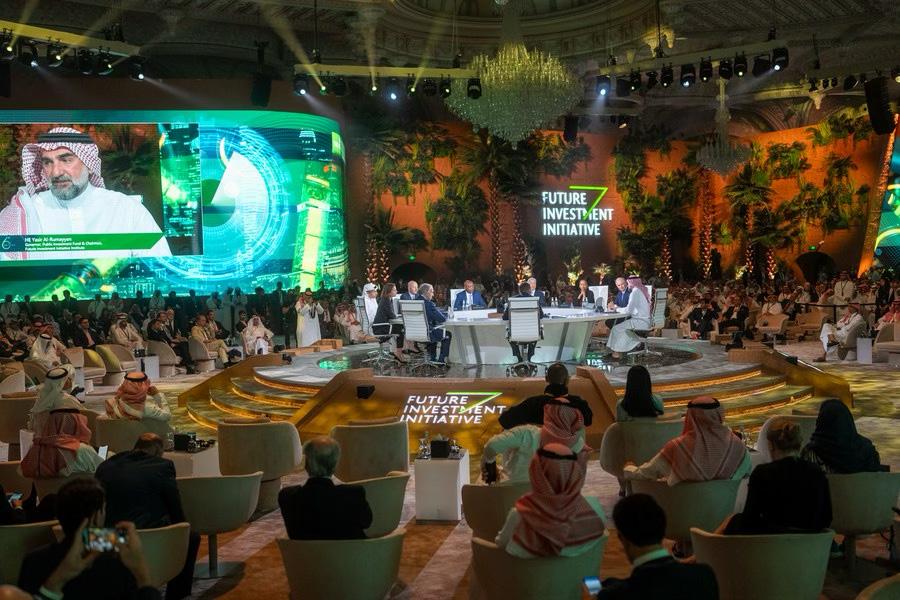

Vision 2030 is not just a roadmap for Saudi Arabia’s modernization—it is the framework that underpins every sector discussed in this report, shaping the trajectory of the U.S.-Saudi bilateral relationship. Its transformative ambitions offer opportunities for alignment between U.S. and Saudi interests, but they also carry inherent risks. Among them is the Kingdom’s heavy reliance on the leadership of MBS, whose consolidation of power has tied Vision 2030 to his personal rule. Any disruption to his leadership could fundamentally alter the direction of reform, leaving the Kingdom vulnerable to sudden and destabilizing shifts. Saudi Arabia’s ability to navigate this and other associated risks will have profound implications for both its domestic stability and its strategic partnerships, including with the United States.
While the Kingdom now enjoys youthful energy, marked by new opportunities and promises of modernization, the rapid, top-down nature of these changes carries inherent risks that could affect both domestic stability and U.S. interests in the region. For example, the expansion of women’s rights—a hallmark of Vision 2030—has brought significant social shifts. While this progress has been widely celebrated, it introduces the potential for male backlash due to increased competition in the labor market and shifting familial roles. Historical parallels, such as societal reactions to the women’s movement in the United States during the 1970s, provide some context but are limited by the vastly different cultural and political environments.271
Similarly, the sidelining of ultra-conservative religious figures—once central to legitimizing the Saudi monarchy—raises the specter of latent discontent. While these actors have been politically neutralized under MBS’s rule, they are dormant, not defeated.272 At the same time, youth unemployment remains a persistent challenge, and while the government has promised to generate new jobs in technology, entertainment, and tourism, many of these opportunities remain speculative. The reforms in part intend to address the frustrations of Saudi youth by providing recreational outlets, but societal fault lines remain.273 Should Vision 2030 fail to deliver on its promises, a frustrated youth population could find common cause with these conservative voices, exacerbating societal fault lines. This risk is compounded by the repression of political liberals, who might otherwise serve as a counterweight to conservative backlash.
For U.S. policymakers, these dynamics require a pragmatic and nuanced approach. While the reforms of Vision 2030 provide opportunities for closer alignment, the Kingdom’s internal risks—dormant conservative forces, generational frustration, and the fragility of rapid change—cannot be ignored.274 Washington should balance support for sustained, inclusive development with preparedness for potential shocks.
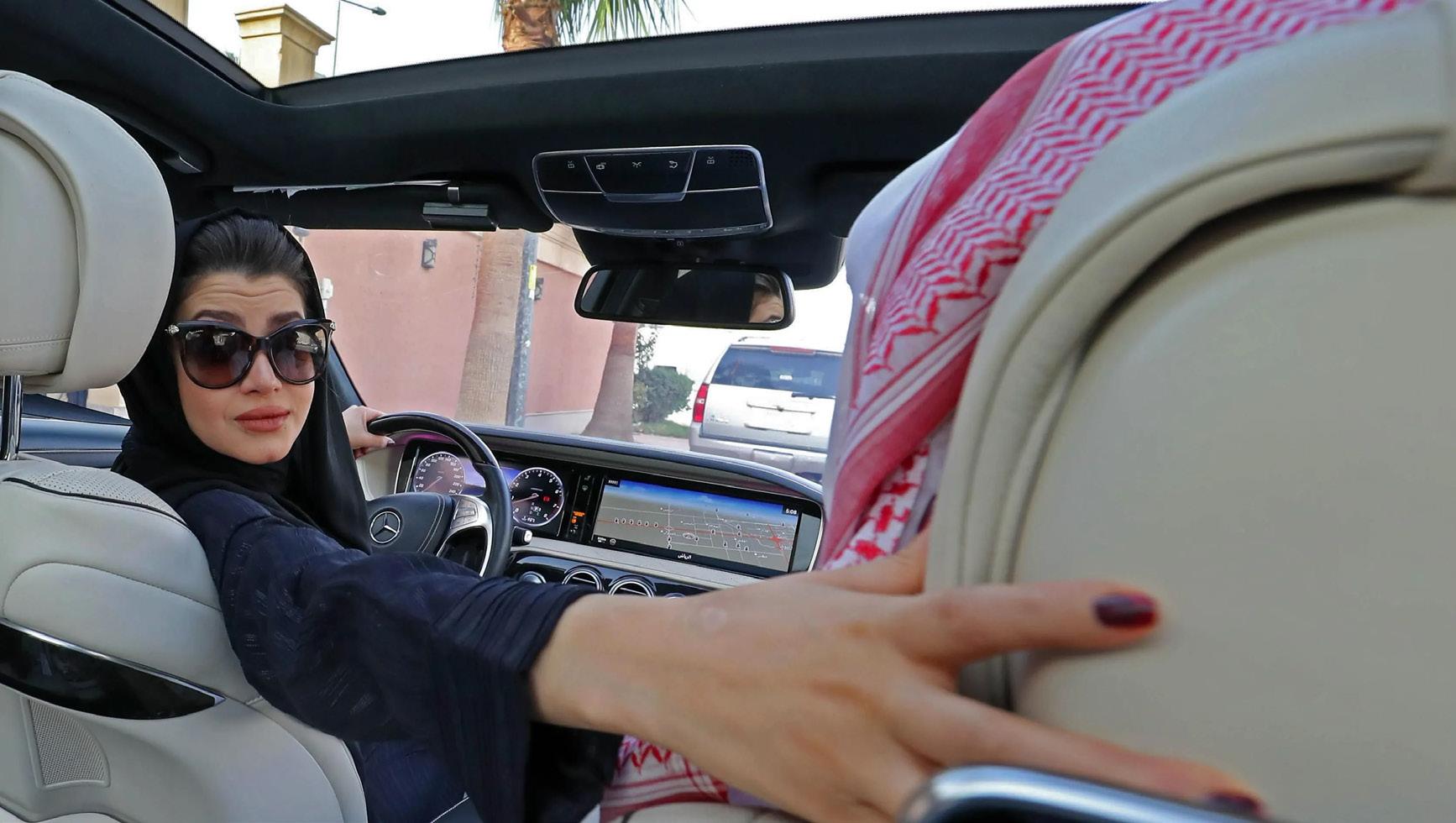

Saudi Arabia has undergone profound change under Vision 2030. The Kingdom’s transformation presents numerous opportunities where the United States can leverage shared goals in security and regional stability, balance traditional and renewable energies, support Saudi Arabia’s growth in mutually strategic emerging industries, and encourage a cooperative and transparent investment environment in the Kingdom. By collaborating in these domains, the United States can position itself as a critical partner in Saudi Arabia’s transformation while safeguarding U.S. economic, geopolitical, and national security priorities.
The interconnection of these focus areas underscores the need for a cohesive strategy. Security cooperation fosters regional stability, which is essential for implementing Vision 2030 and advancing broader U.S.-Saudi economic and technological ties. The energy partnership, driven by Saudi Arabia’s natural endowments and ambition to lead in clean energy, offers an ideal platform for advancing the global transition to renewables. Moreover, Saudi Arabia’s investments in AI, data centers, semiconductors, and critical minerals provide a strategic avenue for the United States to bolster energy security, lead in emerging technologies, and secure critical mineral supply chains currently dominated by China. Realizing these opportunities and achieving mutually beneficial outcomes requires continued improvements to Saudi Arabia’s regulatory framework and additional efforts to enhance Saudi workforce development.
For U.S. policymakers, these developments present many opportunities. But the partnership is not without risks. Saudi Arabia’s rapid socio-economic transformation under Vision 2030 could lead to cultural backlash and instability, further exacerbated by the consolidation of power under MBS. Additionally, U.S. domestic and Congressional opposition to Saudi Arabia’s human rights record poses challenges to deepening ties. An incoming Trump administration, buoyed by Republican control of the House and Senate, may be more likely to prioritize security and economic policies at the expense of human rights promotion. But in addressing the risks posed by Vision 2030, U.S. advocacy for human rights paired with cultural diplomacy efforts should remain integral to the bilateral relationship, pushing it to align with U.S. values while fostering sustainable and technical development in the Kingdom. Looking ahead, focusing on enhancing security, economic, energy, and technical cooperation with Saudi Arabia will increase the likelihood that emerging industries and technologies align with U.S. priorities. Closer cooperation on these sectors secures U.S. interests and positions both nations to effectively address the pressing challenges of an ever-dynamic and complex region and world.
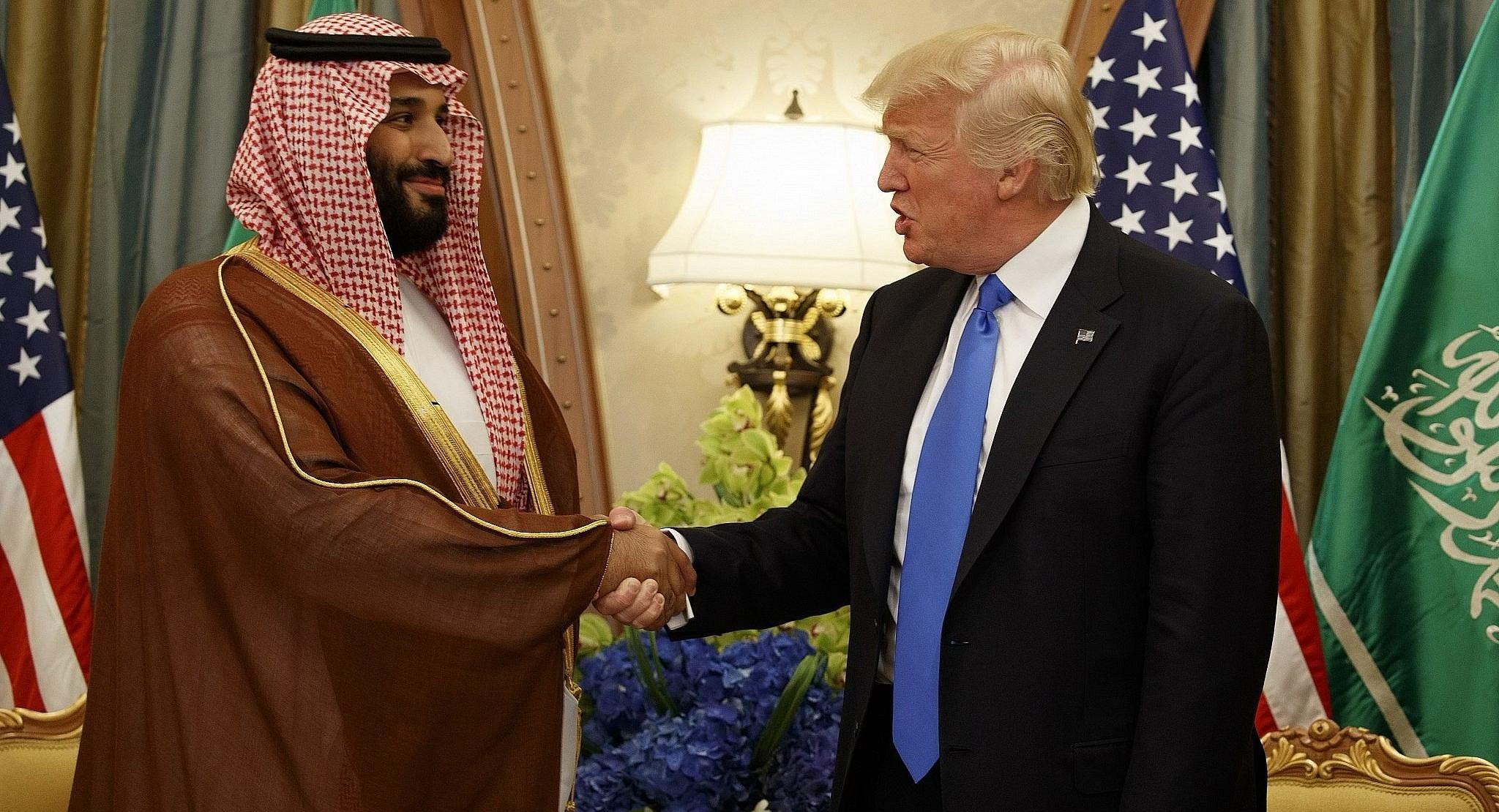

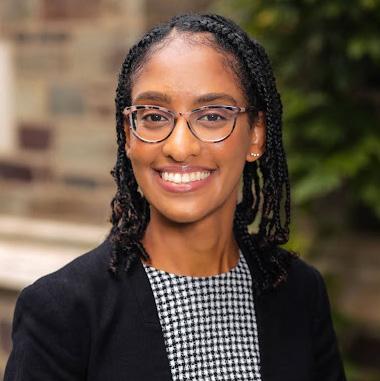
Amana Abdurrezak studies international relations with a focus on science, technology, and environmental policy. Prior to SPIA, Amana spent two years at the U.S. National Science Foundation and two years at the Science and Technology Policy Institute working on issues relevant to environmental conservation, international research collaboration, public health, partnerships in space, and research and development infrastructure. Amana earned her B.A. in International Studies from Bryn Mawr College.
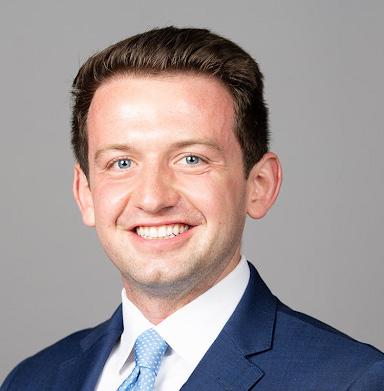
Jackson Blackwell studies international affairs with a focus on Science, Tech, and Environmental Policy and its intersections with arctic geopolitics and finance. While at Princeton, he also supports the Bezos Earth Fund’s Global Energy Innovation team. Prior to SPIA, Jackson helped lead the Arctic Encounter, an Alaska-based NGO and worked with clients across the political, economic, and business sectors. Jackson is a Harry S. Truman Scholar and graduated Magna Cum Laude with Distinguished Honors and degrees in Economics and Political Science from Boise State University.

Nick Brown studies economic policy with a focus on global poverty and environmental adaptation and resilience. Originally hailing from the town of Guildford, England, Nick graduated with a First Class degree in Philosophy, Politics and Economics at Magdalen College, Oxford. After graduating, Nick spent time as a humanitarian aid worker with refugees and asylum seekers in northern France, before becoming a consultant focused on sustainable economic development topics in London, England and Casablanca, Morocco.

Madeline Davet studies domestic policy with a focus on urban climate adaptation and community resilience. Prior to SPIA, she served as an AmeriCorps member in New Orleans and was inspired to join the local Office of Homeland Security and Emergency Preparedness where she responded to numerous disasters including Hurricane Ida and the COVID-19 pandemic. Madeline graduated Cum Laude from Duke University with a B.A. in Environmental Policy, minor in Cultural Anthropology and certificate in Marine Science.
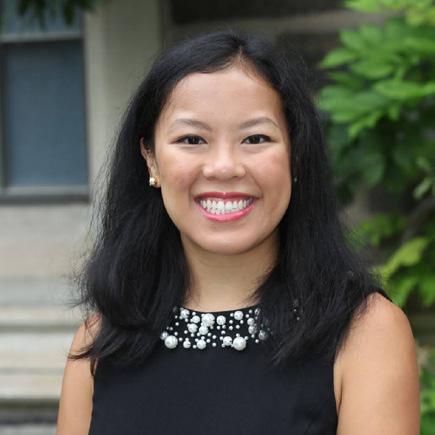
Emily Davies studies domestic policy with a focus on holistic family and child welfare policy. She previously worked at MDRC, providing quantitative research assistance on family and child welfare related evaluations, and at the NYC Department of Health and Mental Hygiene, where she served as the COVID-19 Collateral Surveillance Coordinator, managing data to assess the pandemic’s impact on public health. Emily holds a B.A. in Economics from Harvard University.

Maria Dooling studies public policy and international affairs with a focus on national security, nonproliferation, and emerging technology policy. Prior to Princeton, she managed projects funded by the U.S. Department of State on topics including biosecurity, nuclear security, and clean energy with a range of global partners. She holds a B.S. in Biochemistry, a minor in Political Science, and a certificate in International Studies from Arizona State University. She was a 2019 Boren Scholar to Jordan and a 2020 Fulbright Scholar to Malaysia.


Dylan Gates studies the economics of public policy with a focus on central banking and financial regulation. Prior to Princeton, Dylan was a senior financial institutions policy analyst at the Federal Reserve where he evaluated an array of financial system vulnerabilities and supported the Fed’s response to the COVID-19 pandemic and the failure of Silicon Valley Bank. Dylan earned a B.S. in Applied Mathematics from SUNY Oswego.

Joshua Heupel studies domestic policy with a focus on environment and resource use policy. Josh’s professional interests include sustainable water management, environmental justice, land use policy, and agricultural economics, with past research experience at Yale School of the Environment, California Water Institute, and the California Department of Pesticide Regulation. Before attending Princeton, Josh earned degrees in Agricultural Economics and Political Science as a Smittcamp Family Honors College Scholar at Fresno State.

Anna Schaeffer studies international relations with a focus on public diplomacy. Her professional interests include cultural and linguistic exchanges, political economy, and francophone affairs, with past internship experience at the International Rescue Committee, The Brookings Institution, and the Department of State. Prior to Princeton, Anna earned degrees in International Political Economy, History, and Criminology as a Eugene McDermott Scholar at the University of Texas at Dallas.

Rafael Swit studies international relations with a focus on the policy and economics of climate change, renewable energy, and global climate governance. He currently works as a Project Analyst for New America’s Future Frontlines team where he conducts open-source research on war crimes, hybrid warfare, alternative financial structures, and technology transfers. Rafael has five years of experience in international development – he administered leadership development programs at Mercy Corps and taught English in the Peace Corps in Cambodia – and holds a B.A. in Political Science from Lewis & Clark College.

Sydney Taylor studies international relations with a focus on national security, diplomacy, and the Middle East. She previously spent three years as a high school English teacher in Cleveland public schools with Teach for America and was part of the first Fulbright cohort in Riyadh, Saudi Arabia where she taught English at Prince Sultan University. Sydney holds a B.A. in Security & Intelligence and Middle East Studies from The Ohio State University, and a Master of Science in Education from Johns Hopkins University.

Jennifer Williams studies international development with a focus on Middle East geopolitics. She most recently served as Special Assistant for Research at the Council on Foreign Relations, supporting then-President Richard Haass on foreign policy, including U.S.-Saudi relations. Jennifer holds an honors degree in International Studies and a minor in International Economics from Vassar College, and advanced her Arabic proficiency through study in Jordan, Morocco, and Egypt.

1 Cook, Steven A., and Martin Indyk. “The Case for a New U.S.-Saudi Strategic Compact.” Council on Foreign Relations (CFR), 2024. https:// www.cfr.org/report/case-new-us-saudi-strategic-compact.
2 Arab Center Washington DC. “Saudi-Israeli Normalization Persists Amid Gaza War.” Arab Center Washington DC, October 18, 2023. https://arabcenterdc.org/resource/saudi-israeli-normalization-persistsamid-gaza-war/.
3 Chivvis, Christopher S., Kim Ghattas, Aaron David Miller, and Ambassador Dennis Ross. “Is a Defense Treaty With Saudi Arabia Worth the Commitments?” W, July 2024. https://carnegieendowment. org/posts/2024/07/saudi-arabia-us-defense-treaty-worthcommitment?lang=en.
4 Chivvis, Christopher S., Kim Ghattas, Aaron David Miller, and Ambassador Dennis Ross. “Is a Defense Treaty With Saudi Arabia Worth the Commitments?” Carnegie Endowment for International Peace, July 2024. https://carnegieendowment.org/posts/2024/07/saudi-arabia-usdefense-treaty-worth-commitment?lang=en.
5 U.S. Department of State. “U.S. Security Cooperation with Saudi Arabia.” U.S. Department of State, September 13, 2023. https://www. state.gov/u-s-security-cooperation-with-saudi-arabia/.
6 U.S. Embassy in Saudi Arabia. “Education and Exchange.” U.S. Embassy in Saudi Arabia. Accessed January 7, 2025. https://sa.usembassy. gov/education/.
7 U.S. Department of Commerce. “Saudi Arabia - Trade Agreements.” Country Commercial Guides, 2023. https://www.trade.gov/countrycommercial-guides/saudi-arabia-trade-agreements#:~:text=In%20 2003%2C%20the%20United%20States,economic%20reform%20 and%20trade%20liberalization.
8 Office of the United States Trade Representative (USTR). “Saudi Arabia.” USTR. Accessed January 7, 2025. https://ustr.gov/countriesregions/europe-middle-east/middle-eastnorth-africa/saudi-arabia.;
World Bank. “Country Profile: United States, 2022 – Trade Flow, Export by Partner Country.” World Integrated Trade Solution (WITS). Accessed January 7, 2025. https://wits.worldbank.org/CountryProfile/ en/Country/USA/Year/2022/TradeFlow/Export/Partner/by-country#.
9 Federal Reserve Bank of Dallas. “Shale Oil Revolution Fuels U.S. Energy Growth, Reshapes Global Market.” Dallas Fed Economics, August 20, 2019. https://www.dallasfed.org/research/ economics/2019/0820#:~:text=U.S.%20shale%20oil%20production%20 rose,tripled%20to%2012.2%20mb%2Fd.
10 Federal Reserve Bank of Dallas, “Shale Oil Revolution Fuels U.S. Energy Growth.”
11 U.S. Department of State. “U.S. Security Cooperation with Saudi Arabia.” U.S. Department of State, September 13, 2023. https://www. state.gov/u-s-security-cooperation-with-saudi-arabia/.
12 Harvard Growth Lab. “Saudi Arabia - United States Trade Data Over Time.” The Atlas of Economic Complexity. Accessed January 7, 2025. https://atlas.hks.harvard.edu/explore/overtime?exporter=country682&importer=country-840&startYear=1962&productClass=SITC.
13 U.S. Department of the Treasury. “Table 3: Major Foreign Holders of U.S. Long-Term Securities.” Treasury International Capital (TIC) System. Accessed January 7, 2025. https://ticdata.treasury.gov/resourcecenter/data-chart-center/tic/Documents/slt_table3.txt.
14 U.S. Department of the Treasury, “Table 3: Major Foreign Holders of U.S. Long-Term Securities.”
15 U.S. Securities and Exchange Commission (SEC). “Aramco: Company Filings.” EDGAR Database. Accessed January 7, 2025. https://www.sec. gov/edgar/browse/?CIK=1767640.
16 England, Andrew. “Saudi wealth fund brings era of easy money to an end.” Financial Times, December 15, 2024. https://www.ft.com/ content/e22b512e-f5c0-43d8-86ce-a9e014aa4e55.
17 Bureau of Economic Analysis (BEA). “Direct Investment by Country and Industry.” U.S. Department of Commerce. Accessed January 7, 2025. https://www.bea.gov/international/di1fdibal.
18 Ministry of Investment of Saudi Arabia (MISA). Annual Foreign Direct Investment Bulletin 2023. Table 4.1. November 2024. https:// misa.gov.sa/app/uploads/2024/11/Annual-Foreign-Direct-InvestmentBulletin-2023.pdf.
19 Office of the United States Trade Representative (USTR). “Saudi Arabia.” USTR. Accessed January 7, 2025. https://ustr.gov/countriesregions/europe-middle-east/middle-eastnorth-africa/saudi-arabia.
20 General Authority for Statistics (GaStat). “National Accounts Indicators, Saudi Arabia.” General Authority for Statistics, Kingdom of Saudi Arabia. Accessed January 7, 2025. https://www.stats.gov.sa/ en/823.
21 World Bank. “Saudi Arabia - World Development Indicators Dataset.” World Bank Data Catalog. Accessed January 7, 2025. https://datacatalog. worldbank.org/search/dataset/0038130.
22 World Bank, “Saudi Arabia - World Development Indicators Dataset.”
23 International Monetary Fund (IMF). Saudi Arabia: 2024 Article IV Consultation—Press Release; Staff Report; and Informational Annex. Pages 1–6. IMF Country Report No. 24/530, September 3, 2024. https://www.imf.org/en/Publications/CR/Issues/2024/09/03/SaudiArabia-2024-Article-IV-Consultation-Press-Release-Staff-Report-andInformational-Annex-554530.
24 Kingdom of Saudi Arabia. Saudi Vision 2030. Accessed January 7, 2025. https://www.vision2030.gov.sa/media/rc0b5oy1/saudi_vision203. pdf.
25 Kingdom of Saudi Arabia, Saudi Vision 2030.
26 Thompson, Mark. Being Young, Male, and Saudi. Chapter 6, “Distrust, Fault Lines, and Recreation.” 2019. https://drive.google.com/ open?id=1–LryfIa5XDkEJT60y5ZbKKmVORsgD-i&usp=drive_fs.
27 Hiltner, Stephen. “Saudi Arabia Seeks to Boost Tourism with Ambitious Vision.” The New York Times, June 5, 2024. https://www. nytimes.com/2024/06/05/travel/saudi-arabia-tourism.html.
28 Chilton, Nicola. “Saudi Arabia’s Diriyah: The Kingdom’s New Cultural Jewel.” CNN Travel, 2024. https://edition.cnn.com/travel/ article/saudi-arabia-diriyah/index.html.
29 Carnegie Endowment for International Peace. “Influence Abroad: Saudi Arabia Replaces Salafism in Its Soft Power Outreach.” Carnegie Middle East Center, December 2024. https://carnegieendowment.org/ research/2024/12/influence-abroad-saudi-arabia-replaces-salafism-in-itssoft-power-outreach?lang=en¢er=middle-east.
30 Kingdom of Saudi Arabia. “Overview.” Vision 2030. Accessed January 7, 2025. https://www.vision2030.gov.sa/en/overview.
31 Cook, Steven A., and Martin Indyk. “The Case for a New U.S.-Saudi Strategic Compact.” Council on Foreign Relations (CFR), 2024. https:// www.cfr.org/report/case-new-us-saudi-strategic-compact.
32 Ulrichsen, Kristian Coates. “The US-Saudi ‘Special Relationship,’ 20 Years After 9/11.” Al Jazeera, September 9, 2021. https://www.aljazeera. com/opinions/2021/9/9/the-us-saudi-special-relationship-20-yearsafter-9.
33 White House. “President Bush, Saudi Ambassador Discuss Middle East Situation.” White House Archives, April 25, 2002. https://georgewbushwhitehouse.archives.gov/news/releases/2002/04/20020425-4.html.
34 Cook, Steven A., and Martin Indyk. “The Case for a New U.S.-Saudi Strategic Compact.” Council on Foreign Relations (CFR), 2024. https:// www.cfr.org/report/case-new-us-saudi-strategic-compact.
35 Al Jazeera. “Why Saudi Arabia and Israel Oppose Iran Nuclear Deal.” Al Jazeera, April 14, 2015. https://www.aljazeera.com/news/2015/4/14/ why-saudi-arabia-and-israel-oppose-iran-nuclear-deal.

36 Cook, Steven A., and Martin Indyk. “The Case for a New U.S.-Saudi Strategic Compact.” Council on Foreign Relations (CFR), 2024. https:// www.cfr.org/report/case-new-us-saudi-strategic-compact.
37 Christopher J. Le Mon, “Moving From Partisan to Peacemaker in Yemen,” in Re-engaging the Middle East: A New Vision for U.S. Policy, ed. Dafna H. Rand and Andrew P. Miller (Washington, DC: Brookings Institution Press, 2020), 51–53.
38 Cook, Steven A., and Martin Indyk. “The Case for a New U.S.-Saudi Strategic Compact.” Council on Foreign Relations (CFR), 2024. https:// www.cfr.org/report/case-new-us-saudi-strategic-compact.
39 Fahim, Kareem, and Ellen Nakashima. “Iran Dismisses Allegations It Carried Out Crippling Attack on Saudi Oil Facilities.” The Washington Post, September 15, 2019. https://www.washingtonpost.com/world/ iran-dismisses-allegations-it-carried-out-crippling-attack-on-saudi-oilfacilities/2019/09/15/021b6822-d731-11e9-8924-1db7dac797fb_story. html.
40 Baker Institute for Public Policy. “The U.S. Response to Attacks on Persian Gulf Oil Infrastructure.” Rice University’s Baker Institute for Public Policy, September 18, 2019. https://www.bakerinstitute.org/ research/us-response-attacks-persian-gulf-oil-infrastructure.
41 Holland, Steve, and Rania El Gamal. “Trump Says He Does Not Want War after Attack on Saudi Oil Facilities.” Reuters, September 16, 2019. https://www.reuters.com/article/world/trump-says-he-does-notwant-war-after-attack-on-saudi-oil-facilities-idUSKBN1W10X6/.
42 Gallup. “Perceptions of Foreign Countries.” Gallup News. Accessed January 7, 2025. https://news.gallup.com/poll/1624/perceptionsforeign-countries.aspx.
43 Scahill, Jeremy. “Joe Biden Can’t Quit the Saudi ‘Pariahs’.” The Intercept, December 14, 2022. https://theintercept.com/2022/12/14/ biden-saudi-arabia-mbs/#:~:text=We%20were%20going%20to%20 in,they%E2%80%99re%20going%20in%20and.
44 Dent, Elizabeth, and Grant Rumley. “How the U.S. Used Arms Sales to Shift Saudi Behavior.” The Washington Institute for Near East Policy, 2024. https://www.washingtoninstitute.org/policy-analysis/how-usused-arms-sales-shift-saudi-behavior.
45 Renshaw, Jarrett. “Biden Ends Trip with U.S.-Saudi Relations Mended, a Few Other Wins.” Reuters, July 16, 2022. https://www. reuters.com/world/middle-east/biden-ends-trip-with-us-saudi-relationsmend-few-other-wins-2022-07-16/.
46 Holland, Steve, and Patricia Zengerle. “U.S. to Lift Ban on Offensive Weapons Sales to Saudi Arabia, Sources Say.” Reuters, August 9, 2024. https://www.reuters.com/world/us-lift-ban-offensive-weapons-salessaudi-arabia-sources-say-2024-08-09/.
47 U.S. Department of Commerce. “Saudi Arabia - Defense and Security.” Country Commercial Guides, 2024. https://www.trade.gov/ country-commercial-guides/saudi-arabia-defense-security.
48 Blanchard, Christopher M. Saudi Arabia: Background and U.S. Relations. Congressional Research Service Report RL33533, June 2023. https://sgp.fas.org/crs/mideast/RL33533.pdf.
49 Royal Embassy of Saudi Arabia. Saudi Arabia and Counterterrorism. Accessed January 7, 2025. https://www.saudiembassy.net/sites/default/ files/SAUDI%20ARABIA%20AND%20COUNTERTERRORISM. pdf.
50 U.S. Department of State. Country Reports on Terrorism 2022: Saudi Arabia. Accessed January 7, 2025. https://www.state.gov/reports/countryreports-on-terrorism-2022/saudi-arabia#:~:text=Countering%20 Violent%20Extremism%3A%20Saudi%20Arabia,the%20military%20 and%20security%20services.
51 Toosi, Nahal. “Saudis Try to Clean Up Image Ahead of Obama Visit.” Politico, April 14, 2016. https://www.politico.com/story/2016/04/ saudi-arabia-obama-visit-terrorism-221950.
52 United Nations. “Funding and Donor Support.” United Nations Office of Counter-Terrorism. Accessed January 7, 2025. https://www. un.org/counterterrorism/cct/funding.
53 Blanchard, Christopher M. Saudi Arabia: Background and U.S. Relations. Congressional Research Service Report RL33533, June 2023. https://sgp.fas.org/crs/mideast/RL33533.pdf.
54 Blanchard, Christopher M. Saudi Arabia: Background and U.S. Relations. Congressional Research Service Report RL33533, June 2023. https://sgp.fas.org/crs/mideast/RL33533.pdf.
55 Blanchard, Christopher M. Saudi Arabia: Background and U.S. Relations. Congressional Research Service Report RL33533, June 2023. https://sgp.fas.org/crs/mideast/RL33533.pdf.
56 Nakhoul, Samia, and Pesha Magid. “Saudi Arabia Abandons Pursuit of U.S. Defense Treaty Over Israel Stalemate.” Reuters, November 29, 2024. https://www.reuters.com/world/saudi-arabia-abandons-pursuitus-defence-treaty-over-israel-stalemate-2024-11-29/.
57 Singh, Michael. “The Real Purpose of the U.S.-Saudi Security Agreement.” Foreign Affairs, 2024. https://www.foreignaffairs.com/ saudi-arabia/real-purpose-us-saudi-security-agreement.
58 Ahmadian, Hassan, and Payam Mohseni. “From Detente to Containment: The Emergence of Iran’s New Saudi Strategy.” International Affairs, vol. 97, no. 3, 2024, pp. 779-798. https://academic. oup.com/ia/article-abstract/97/3/779/6222283?redirectedFrom=fullte xt.
59 Qadri, Hussain Mohi-ud-Din. “Foreign, Political and Financial Influences on Religious Extremism: A Study of Madrassas in Punjab, Pakistan.” Counter Terrorist Trends and Analyses 10, no. 4 (2018): 5–11. http://www.jstor.org/stable/26402134.
60 Almosawa, Shuaib, Ben Hubbard, and Troy Griggs. “Yemen Cholera: A Humanitarian Crisis.” The New York Times, August 23, 2017. https://www.nytimes.com/interactive/2017/08/23/world/middleeast/ yemen-cholera-humanitarian-crisis.html.
61 Kinninmont, Jane. The Gulf Divided: The Impact of the Qatar Crisis. Chatham House, May 30, 2019. https://www.chathamhouse.org/sites/ default/files/publications/research/2019-05-30-Gulf%20Crisis_0.pdf.
62 Mroue, Bassem. “Lebanese Fear PM’s Resignation Was a Saudi Power Play.” Associated Press, 2024. https://apnews.com/ article/438e9347b26f4cecab0da5a2708a530e.
63 Farouk, Yasmine. “Riyadh’s Motivations Behind the Saudi-Iran Deal.” Carnegie Endowment for International Peace, March 2023. https://carnegieendowment.org/posts/2023/03/riyadhs-motivationsbehind-the-saudi-iran-deal?lang=en.
64 International Monetary Fund (IMF). “Red Sea Attacks Disrupt Global Trade.” IMF Blog, March 7, 2024. https://www.imf.org/en/ Blogs/Articles/2024/03/07/Red-Sea-Attacks-Disrupt-Global-Trade.
65 Arab Center for Research and Policy Studies (ACRPS). Arab Opinion on the War on Gaza: Full Report. Accessed January 7, 2025. https:// www.dohainstitute.org/en/Lists/ACRPS-PDFDocumentLibrary/arabopinion-war-on-gaza-full-report-en.pdf.
66 Foer, Franklin. “The War That Would Not End.” The Atlantic, September 2024. https://www.theatlantic.com/international/ archive/2024/09/israel-gaza-war-biden-netanyahu-peacenegotiations/679581/.
67 Andrew England. “Middle East looks to Saudi Arabia to rein in Donald Trump.” Financial Times, November 24, 2024. https://www. ft.com/content/8f89fd03-d53c-4e06-9531-2048b8a862b5.
68 Thompson, Mark. Being Young, Male, and Saudi. Chapter 6, “Distrust, Fault Lines, and Recreation.” 2019. https://drive.google.com/ open?id=1–LryfIa5XDkEJT60y5ZbKKmVORsgD-i&usp=drive_fs.
69 Farouk, Yasmine. “Riyadh’s Motivations Behind the Saudi-Iran

Deal.” Carnegie Endowment for International Peace, March 2023. https://carnegieendowment.org/posts/2023/03/riyadhs-motivationsbehind-the-saudi-iran-deal?lang=en.
70 Bazzi, Mohamad. “Gaza Ceasefire Talks Are on Their Last Legs, and Benjamin Netanyahu Is to Blame.” The Guardian, August 14, 2024. https://www.theguardian.com/commentisfree/article/2024/aug/14/ netanyahu-israel-gaza-ceasefire.
71 Al Jazeera. “Israel’s Knesset Votes to Reject Palestinian Statehood.” Al Jazeera, July 18, 2024. https://www.aljazeera.com/news/2024/7/18/ israels-knesset-votes-to-reject-palestinian-statehood.
72 Al Jazeera. “Are the Houthi Red Sea Interceptions Going to Bring About a Regional War?” Al Jazeera, January 15, 2024. https://www. aljazeera.com/news/2024/1/15/are-the-houthi-red-sea-interceptionsgoing-to-bring-about-a-regional-war.
73 Al Jazeera. “US Caught by Surprise as Syria Overthrows al-Assad: Analysis.” Al Jazeera, December 8, 2024. https://www.aljazeera. com/news/2024/12/8/us-caught-surprise-syria-overthrows-al-assadanalysis.
74 Reuters. “Saudi Official Says Kingdom Is in Contact with All Syria Stakeholders.” Reuters, December 8, 2024. https://www.reuters.com/ world/middle-east/saudi-official-says-kingdom-is-contact-with-allsyria-stakeholders-2024-12-08/.
75 Tharoor, Ishaan. “After Assad’s Fall, a New Middle East ‘Order’ Is Taking Shape.” The Washington Post, December 20, 2024. https:// www.washingtonpost.com/world/2024/12/20/assad-fall-syria-israelturkey-iran-advantage/.
76 Brookings Institution. “Congress Should Respect Jamal Khashoggi’s Legacy by Ending Support for the Saudi War in Yemen.” Brookings Institution, October 2, 2023. https://www.brookings.edu/ articles/congress-respect-jamal-khashoggis-legacy-by-ending-supportfor-the-saudi-war-in-yemen/.
77 The Associated Press. “Saudi Arabia Faces Criticism at UN over Women’s Rights, Arrests.” Associated Press News, March 7, 2023. https://apnews.com/article/saudi-rights-un-women-arrests-3edd70e3e 2ccd477def1e02a78234330.
78 Dunbar, Graham. “Saudi Arabia Defends Record at UN Human Rights Council amid Criticism.” Associated Press News, March 7, 2023. https://apnews.com/article/saudi-arabia-un-human-rightscouncil-2098e8faa0dd947157bd2ef1398a9737.
79 Human Rights Watch. “Saudi Arabia’s Deadly Abuses Despite Image Campaign.” Human Rights Watch, January 11, 2024. https:// www.hrw.org/news/2024/01/11/saudi-arabia-deadly-abuses-despiteimage-campaign.
80 Al Jazeera. “Analysis: Is the U.S. Approach to Gaza Damaging Ties with Its Arab Allies?” Al Jazeera, October 27, 2023. https://www. aljazeera.com/features/2023/10/27/analysis-is-the-us-approach-togaza-damaging-ties-with-its-arab-allies?
81 Al Jazeera. “Analysis: Saudi Arabia’s Diplomatic and Energy Soft Power in Sudan.” Al Jazeera, May 15, 2023. https://www.aljazeera.com/ news/2023/5/15/analysis-saudi-arabias-diplomatic-energy-soft-powerin-sudan.
82 World Economic Forum. “Emerging Partnerships: Africa and the Gulf Cooperation Council (GCC) Economies.” World Economic Forum, April 2024. https://www.weforum.org/stories/2024/04/africagcc-gulf-economy-partnership-emerging/.
83 Reuters. “Saudi Arabia Is Ready to Mediate Between Russia and Ukraine, TASS Cites Envoy Saying.” Reuters, October 29, 2024. https://www.reuters.com/world/saudi-arabia-is-ready-mediatebetween-russia-ukraine-tass-cites-envoy-saying-2024-10-29/.
84 Carnegie Endowment for International Peace. “BRICS, Saudi Arabia, and Hedging: Why?” Carnegie Emissary, November 2024. https://carnegieendowment.org/emissary/2024/11/brics-saudi-arabia-
hedging-why?lang=en.
85 Rugh, William. “American Soft Power and Public Diplomacy in the Arab World.” Palgrave Communications, 2024. https://www.nature. com/articles/palcomms2016104.
86 Royal Embassy of Saudi Arabia. “Adel bin Ahmed Al-Jubeir, Biography.” Saudi Embassy, accessed January 7, 2025. https://web. archive.org/web/20150702140228/http://www.saudiembassy.net/ embassy/adelbio.aspx.
87 Al Arabiya English. “Who Is Prince Khaled bin Salman? Saudi Arabia’s New Ambassador to the U.S.” Al Arabiya, April 23, 2017. https://english.alarabiya.net/features/2017/04/23/Who-is-PrinceKhaled-bin-Salman-Saudi-Arabia-s-new-ambassador-to-the-US-.
88 The PIE News. “Saudi-US Partnerships Set to Power Vision 2030 Goals.” The PIE News, September 12, 2023. https://thepienews.com/ saudi-us-partnerships-set-to-power-vision-2030-goals/.
89 U.S. Department of State. “United States-Saudi Arabia Relationship: Eight Decades of Partnership.” U.S. Department of State, October 18, 2023. https://www.state.gov/united-states-saudi-arabia-relationshipeight-decades-of-partnership/.
90 U.S. Embassy in Saudi Arabia. “Fulbright Program.” U.S. Embassy in Saudi Arabia. Accessed January 7, 2025. https://sa.usembassy.gov/ fulbright-program/.
91 Edge of Arabia. “Saudi Contemporary Art in D.C.: Kennedy Center.” Edge of Arabia. Accessed January 7, 2025. http://edgeofarabia. com/us-tour/saudi-contemporary-art-in-d.c.-kennedy-center.
92 Arizona State University. “Saudi Arabia Initiative.” Arizona State University. Accessed January 7, 2025. https://saudiarabia.asu.edu/.
93 Thompson, Elizabeth. Being Young, Male, and Saudi. Chapter 6, “Distrust, Fault Lines, and Recreation.” 2019. https://drive. google.com/open?id=1–LryfIa5XDkEJT60y5ZbKKmVORsgDi&usp=drive_fs.
94 Buckingham, Philip. “Saudi Arabia and the 2034 World Cup: What You Need to Know.” The New York Times, December 10, 2024. https://www.nytimes.com/athletic/5983648/2024/12/10/saudiarabia-world-cup-2034-explained-fifa/.
95 Human Rights Watch. “Saudi Government Uses European Football to ‘Sportswash’ Its Reputation.” Human Rights Watch, January 17, 2024. https://www.hrw.org/news/2024/01/17/saudi-governmentuses-european-football-sportswash-its-reputation.
96 Sfakianakis, John, ed. The Economy of Saudi Arabia. “The New Industries,” by Kristin Diwan and Nicholas Fallin. 2024. https://drive. google.com/file/d/1pfSipLWk22oAloxCBzGxMtMw_B_G1pZx/ view?pli=1.
97 U.S. Department of State. “United States-Saudi Arabia Relationship: Eight Decades of Partnership.” U.S. Department of State, October 18, 2023. https://www.state.gov/united-states-saudi-arabia-relationshipeight-decades-of-partnership/.
98 PwC. “Saudi Arabia Stands to Gain US$13 Billion from Esports by 2023.” PwC Media Centre, 2024. https://www.pwc.com/m1/en/ media-centre/2024/saudi-arabia-stands-to-gain-us13-billion-fromesports-by-2023.html.
99 Gulf Business. “Esports Boom Could Add $13.3 Billion to Saudi GDP.” Gulf Business, 2024. https://gulfbusiness.com/esports-boomcould-add-13-3bn-to-saudi-gdp/.
100 Desiderio, Andrew. “A History of Congressional Delegations and How They Shaped U.S. Foreign Policy.” Politico, July 5, 2022. https:// www.politico.com/news/2022/07/05/congressional-delegationhistory-00043905.
101 Chevron. “1927-1946 | History | About Chevron.” Chevron, June 8, 2011. https://web.archive.org/web/20110608183059/http://www. chevron.com/about/leadership/history/1927/.

102 Fattouh, Bassam. Saudi Oil Policy: Continuity and Change in the Era of the Energy Transition. Oxford Institute for Energy Studies, 2024. https://www.oxfordenergy.org/publications/saudi-oil-policycontinuity-and-change-in-the-era-of-the-energy-transition/.
103 Mackenzie, Wood. “Decisive Action Needed to Achieve Net Zero by 2050, as World Is Currently on Path for 2.5 ˚C to 3 ˚C Global Warming, | Wood Mackenzie,” October 29, 2024. https://www. woodmac.com/press-releases/2024-press-releases/decisive-actionneeded-to-achieve-net-zero-by-2050-as-world-is-currently-on-path-for2.5-c-to-3-c-global-warming/
104 Maryem Farsaoui, “Saudi Arabia Steps up Efforts to Achieve Ambitious CCS Targets - Global CCS Institute,” Global CCS Institute, August 15, 2024, https://www.globalccsinstitute.com/news-media/ insights/saudiarabiaccsefforts/.
105 U.S. Energy Information Administration (EIA). “What Is the United States’ Total Oil Production?” U.S. Energy Information Administration, accessed January 7, 2025. https://www.eia.gov/tools/ faqs/faq.php?id=709&t=6.
106 Volker Roeben, What drives OPEC production policy?, The Journal of World Energy Law & Business, Volume 17, Issue 1, February 2024, Pages 19–34, https://doi.org/10.1093/jwelb/jwad031
107 Lynch, Michael. “Is Saudi Arabia Becoming the Swing Producer?” Forbes, June 3, 2024. https://www.forbes.com/sites/ michaellynch/2024/06/03/is-saudi-arabia-becoming-the-swingproducer/.
108 Palladino, Camilla. “Why Saudi Aramco Is Not Maximising Its Advantage as the Lowest Cost Producer.” Financial Times, May 31, 2024, sec. Lex. https://www.ft.com/content/773462a1-f8ad-4bbaa6d4-68c72a7c77e7.
109 Erlingsen, Espen, and Elliot Busby. “Shale Project Economics Still Reign Supreme as Cost of New Oil Production Rises Further.” Rystad Energy. Accessed December 13, 2024. https://www.rystadenergy.com/ news/upstream-breakeven-shale-oil-inflation
110 Palladino, Camilla. “Why Saudi Aramco Is Not Maximising Its Advantage as the Lowest Cost Producer.” Financial Times, May 31, 2024, sec. Lex. https://www.ft.com/content/773462a1-f8ad-4bbaa6d4-68c72a7c77e7.
111 Griffin, Rosemary, Charlie Mitchell, and Herman Wang. “OPEC+ Output Falls 210,000 b/d as Russia Makes Deeper Cut; Quota Compliance Still Lagging.” S&P Global Commodity Insights, October 5, 2024. https://www.spglobal.com/commodity-insights/en/newsresearch/latest-news/crude-oil/050924-opec-output-falls-210000-bdas-russia-makes-deeper-cut-quota-compliance-still-lagging
112 GIS Reports Online. “The Shale Oil Revolution and Its Global Impact.” GIS Reports Online, 2024. https://www.gisreportsonline. com/r/shale-oil/.
113 Arab Center Washington DC. “Trump Is Back: What Does It Mean for Oil and US-Gulf Relations?” Arab Center Washington DC, 2024. https://arabcenterdc.org/resource/trump-is-back-what-does-itmean-for-oil-and-us-gulf-relations/.
114 U.S. Energy Information Administration (EIA). “EIA Projects 13.5 mb/d for 2025, KSA Sticking to a Production Quota of 9 mb/d.” U.S. Energy Information Administration, accessed January 7, 2025. https://www.eia.gov/todayinenergy/detail.php?id=63824.
115 The Economist. “How Much Oil Can Trump Pump?” The Economist, December 9, 2024. https://www.economist.com/financeand-economics/2024/12/09/how-much-oil-can-trump-pump.
116 Lawler, Alex, and Fabio Teixeira. “OPEC Rolls Out Global Oil Outlook for 2050, Sees No Peak in Demand.” Reuters, September 24, 2024. https://www.reuters.com/business/energy/opec-rollsout-global-oil-outlook-2050-sees-no-peak-demand-2024-0924/#:~:text=OPEC%20expects%20world%20oil%20demand,2050%20 forecasts%20from%20the%20industry.
117 Young, Karen. “How the New Geopolitics of Energy Informs the Current Oil Price-Risk Relationship in the Middle East.” Georgetown Journal of International Affairs, December 10, 2024. https://gjia. georgetown.edu/2024/12/10/how-the-new-geopolitics-of-energyinforms-the-current-oil-price-risk-relationship-in-the-middle-east/.
118 Lawler, Alex, and Fabio Teixeira. “OPEC Rolls Out Global Oil Outlook for 2050, Sees No Peak in Demand.” Reuters, September 24, 2024. https://www.reuters.com/business/energy/opec-rollsout-global-oil-outlook-2050-sees-no-peak-demand-2024-0924/#:~:text=OPEC%20expects%20world%20oil%20demand,2050%20 forecasts%20from%20the%20industry.
119 Mackenzie, Wood. “Decisive Action Needed to Achieve Net Zero by 2050, as World Is Currently on Path for 2.5 ˚C to 3 ˚C Global Warming, | Wood Mackenzie,” October 29, 2024. https://www. woodmac.com/press-releases/2024-press-releases/decisive-actionneeded-to-achieve-net-zero-by-2050-as-world-is-currently-on-path-for2.5-c-to-3-c-global-warming/.
120 Goldman Sachs. “Peak Oil Demand Is Still a Decade Away.” Goldman Sachs Insights, 2024. https://www.goldmansachs.com/ insights/articles/peak-oil-demand-is-still-a-decade-away.
121 International Energy Agency (IEA). Oil 2024: Analysis and Forecasts to 2026. International Energy Agency, 2024. https://www. iea.org/reports/oil-2024.
122 Cahill, Ben, Ilaria Mazzocco, and Chen Huang. “China Holds the Key to Global Energy Demand,” February 8, 2023. https://www.csis. org/analysis/china-holds-key-global-energy-demand
123 Downs, Erica, and Abhiram Rajendran. “China’s Slowing Oil Demand Growth Is Likely to Persist and Could Impact Markets.” Center on Global Energy Policy at Columbia University SIPA | CGEP. Accessed December 13, 2024. https://www.energypolicy.columbia. edu/chinas-slowing-oil-demand-growth-is-likely-to-persist-and-couldimpact-markets/
124 U.S. Energy Information Administration (EIA). Short-Term Energy Outlook (STEO). U.S. Energy Information Administration, 2024. https://www.eia.gov/outlooks/steo/.
125 Tony Pan, “Heat Is the Greatest Challenge in Tackling Climate Change,” World Economic Forum, March 16, 2023, https://www. weforum.org/stories/2023/03/heat-heres-why-its-the-elephant-in-theroom-for-decarbonization/.
126 Doug Vine and Tess Moran, “Advanced Nuclear Process Heat for Industrial Decarbonization” (Center for Climate and Energy Solutions, July 2024), https://www.c2es.org/document/advancednuclear-process-heat-for-industrial-decarbonization/
127 Joe Verde, “New Solar Heat Technology to Decarbonize Steel and Cement Production | Happy Eco News,” August 27, 2024, https:// happyeconews.com/decarbonize-steel-and-cement-production/
128 Julio Friedman and Zhiyuan Fan, “Low-Carbon Heat Solutions for Heavy Industry: Sources, Options, and Costs Today” (Center on Global Energy Policy at Columbia University SIPA | CGEP, October 7, 2019), https://www.energypolicy.columbia.edu/publications/ low-carbon-heat-solutions-heavy-industry-sources-options-and-coststoday/
129 Shehri, Thamir Al, Jan Frederik Braun, Nicholas Howarth, Alessandro Lanza, and Mari Luomi. 2022. “Saudi Arabia’s Climate Change Policy and the Circular Carbon Economy Approach.” Climate Policy 23 (2): 151–67. doi:10.1080/14693062.2022.2070118.
130 Patrick Shröder, Siân Bradley, and Glada Lahn, “G20 Endorses a Circular Carbon Economy: But Do We Need It? | Chatham House –International Affairs Think Tank,” November 27, 2020, https://www. chathamhouse.org/2020/11/g20-endorses-circular-carbon-economydo-we-need-it.
131 Shehri, Thamir Al, Jan Frederik Braun, Nicholas Howarth, Alessandro Lanza, and Mari Luomi. 2022. “Saudi Arabia’s Climate

Change Policy and the Circular Carbon Economy Approach.” Climate Policy 23 (2): 151–67. doi:10.1080/14693062.2022.2070118.
132 Aramco. “Aramco Signs Three MoUs during Visit of US Secretary of Energy.” Aramco, May 17, 2024. https://www.aramco.com/en/newsmedia/news/2024/aramco-signs-three-mous-during-visit-of-us-secretaryof-energy
133 Chandak, Pooja. “New Saudi-U.S. Partnership to Drive Advances in Clean Energy.” SolarQuarter, May 17, 2024. https://solarquarter. com/2024/05/17/new-saudi-u-s-partnership-to-drive-advances-in-cleanenergy/.
134 International Energy Agency (IEA). “Saudi Arabia.” International Energy Agency, 2024. https://www.iea.org/countries/saudi-arabia.
135 Clean Energy Leaders Institute (CELI). “How Maintaining Saudi Arabia’s Oil Dominance May Depend on Going Solar.” Clean Energy Leaders Institute, 2024. https://www.cleanenergyleaders.org/celi/howmaintaining-saudi-arabias-oil-dominance-may-depend-on-going-solar.
136 The index measures average ‘practical’ (meaning the exclusion of built-up, rugged and extremely remote areas) solar PV potential per solar PV unit in each country, measured in kWh/kWp, World Bank. Global Photovoltaic Power Potential by Country. World Bank, 2024. https:// documents1.worldbank.org/curated/en/466331592817725242/pdf/ Global-Photovoltaic-Power-Potential-by-Country.pdf.
137 ACWA Power. “Saudi Arabia Is Unlocking the Potential of Wind Energy.” ACWA Power, 2024. https://www.acwapower.com/news/ saudi-arabia-is-unlocking-the-potential-of-wind-energy/.
138 CMS Law. “Saudi Arabia: CMS Expert Guide to Renewable Energy.” CMS Law, 2024. https://cms.law/en/int/expert-guides/cmsexpert-guide-to-renewable-energy/saudi-arabia.
139 Md Tasbirul Islam, Amjad Ali, Sustainable green energy transition in Saudi Arabia: Characterizing policy framework, interrelations and future research directions, Next Energy, Volume 5, 2024, 100161, ISSN 2949821X, https://doi.org/10.1016/j.nxener.2024.100161. (https://www. sciencedirect.com/science/article/pii/S2949821X24000668)
140 Li-Chen Sim, Karen E. Young, What impedes solar energy deployment? New evidence from power developers in the Arab Gulf states, Energy for Sustainable Development, Volume 84, 2025, 101597, ISSN 0973-0826, https://doi.org/10.1016/j.esd.2024.101597. (https:// www.sciencedirect.com/science/article/pii/S0973082624002230)
141 TechSci Research. Saudi Arabia Wind Power Generator Market: Industry Trends, Share, Size, Growth, Opportunity, and Forecast 2024–2030. TechSci Research, 2024. https://www.techsciresearch.com/report/ saudi-arabia-wind-power-generator-market/21832.html.
142 NS Energy. “Dumat Al-Jandal Wind Farm.” NS Energy. Accessed January 7, 2025. https://www.nsenergybusiness.com/projects/dumat-aljandal-wind-farm/?cf-view.
143 Breakbulk Middle East. “Is Saudi Ready for Full-Scale Wind Projects?” Breakbulk Middle East, 2024. https://middleeast.breakbulk. com/articles/is-saudi-ready-for-full-scale-wind-projects.
144 Public Investment Fund (PIF). “How Global Firsts Are Defining PIF’s Sweeping Renewable Energy Strategy.” Public Investment Fund (PIF), 2024. https://www.pif.gov.sa/en/news-and-insights/globalinsights/2024/how-global-firsts-are-defining-pifs–sweeping-renewableenergy-strategy/#:~:text=Indeed%2C%20localization%20is%20key%20 to,Arabia’s%20renewable%20projects%20by%202030.
145 Zawya. “GCC-Iraq Electricity Interconnection Expected to Start Operations by End of 2024.” Zawya, 2024. https://www.zawya.com/en/ projects/utilities/gcc-iraq-electricity-interconnection-expected-to-startoperations-by-end-2024-q929bh30.
146 Manufacturing Today. “Chinese Clean Energy Firms Expand into Saudi Arabia.” Manufacturing Today, 2024. https://manufacturingtoday.com/news/chinese-clean-energy-firms-expand-into-saudi-arabia/.
147 Reuters. “China Energy Engineering Signs $972 Million Solar Deal with Saudi Partners.” Reuters, August 13, 2024. https://www.reuters. com/sustainability/china-energy-engineering-signs-972-million-solardeal-with-saudi-partners-2024-08-13/.
148 White, Edward, Cheng Leng, Ahmed Al Omran, and Alex IrwinHunt. “Saudi Arabia Pushes Ahead with Renewable Energy Strategy.” Financial Times, August 10, 2024. https://www.ft.com/content/ f0babafc-57e6-434f-9d94-013c312dc0f9.
149 Bradsher, Keith. “China’s Solar Energy Exports Surge as Global Demand Grows.” The New York Times, March 7, 2024. https://www. nytimes.com/2024/03/07/business/china-solar-energy-exports.html.
150 Busby, Joshua, Jonas Goldman, and Fabian E. Villalobos. “Can the US and China Ease Tensions with a Clean Tech Detente?” Carnegie Endowment for International Peace, November 2024. https:// carnegieendowment.org/research/2024/11/can-the-us-and-china-easetensions-with-a-clean-tech-detente?lang=en.
151 U.S. Department of Energy. “Now Available: IEA 2020 U.S. Geothermal Report.” U.S. Department of Energy, Office of Energy Efficiency and Renewable Energy (EERE), accessed January 7, 2025. https://www.energy.gov/eere/geothermal/articles/now-available-iea2020-us-geothermal-report#:~:text=The%20United%20States%20in%20 2020,is%20in%20California%20and%20Nevada.
152 Bukhamseen, Raid. “Developing Geothermal Energy Resources in the Kingdom of Saudi Arabia: A Monumental Step Towards Achieving the Country’s Nationally Determined Contribution Targets Under the Paris Agreement.” Journal of Petroleum Technology (JPT), 2024. https://jpt.spe.org/developing-geothermal-energy-resources-in-thekingdom-of-saudi-arabia-a-monumental-step-towards-achieving-thecountrys-nationally-determined-contribution-targets-under-the-parisagreement.
153 Sundar, Sowmya. “Saudi Arabia’s Only Biofuel Producer Is Tripling Refining Capacity by 2025.” Zawya, 2024. https://www.zawya.com/ en/projects/industry/saudi-arabias-only-biofuel-producer-is-triplingrefining-capacity-by-2025-ocgysm48.
154 International Maritime Organization (IMO). “MEPC 82 Makes Progress on IMO Net Zero Framework.” International Maritime Organization, 2024. https://www.imo.org/en/MediaCentre/ PressBriefings/pages/MEPC-82-makes-progress-IMO-netzeroframework.aspx.
155 Shokri, Umud. “Green Light for Energy: Egypt-Saudi Arabia Interconnection Project Moves Forward.” Gulf International Forum, 2024. https://gulfif.org/green-light-for-energy-egypt-saudi-arabiainterconnection-project-moves-forward/.
156 International Energy Agency (IEA). “Royal Decree of 17/04/2010 on the King Abdullah City for Atomic and Renewable Energies (K.A.CARE).” International Energy Agency, 2010. https://www.iea. org/policies/4951-royal-decree-of-17042010-on-the-king-abdullah-cityfor-atomic-and-renewable-energies-karare.
157 A 123 agreement, required by the 1954 Atomic Energy Act, sets the terms and authorizes cooperation for sharing U.S. peaceful nuclear energy technology, equipment, and materials with other countries.Bugos, S. (2019). Saudi arabia seeks to enrich uranium. Arms Control Today, 49(8), 20-21. Retrieved from https://login.ezproxy.princeton.edu/ login?url=https://www.proquest.com/scholarly-journals/saudi-arabiaseeks-enrich-uranium/docview/2308160714/se-2
158 Blanchard, Christopher, and Paul Kerr. Saudi Arabia: Background and U.S. Relations. CRS In Focus IF10799, updated January 10, 2023. https://crsreports.congress.gov/product/pdf/IF/IF10799.
159 Galindo, Andrea. “What Is Nuclear Energy? The Science of Nuclear Power.” International Atomic Energy Agency (IAEA), 2024. https:// www.iaea.org/newscenter/news/what-is-nuclear-energy-the-science-ofnuclear-power.
160 World Nuclear Association. “Nuclear Power in the World Today.” World Nuclear Association, 2024. https://world-nuclear.org/

information-library/current-and-future-generation/nuclear-power-inthe-world-today#:~:text=Nuclear%20energy%20now%20provides%20 about,in%20about%20220%20research%20reactors.
161 World Nuclear Association. “COP29 in Baku: A Landmark Event for the Global Nuclear Industry.” World Nuclear Association, 2024. https://world-nuclear.org/news-and-media/press-statements/cop29in-baku-a-landmark-event-for-the-global-nuclear-industry.
162 U.S. Department of Energy. “Advantages and Challenges of Nuclear Energy.” Office of Nuclear Energy, U.S. Department of Energy, 2024. https://www.energy.gov/ne/articles/advantages-andchallenges-nuclear-energy.
163 Nakano, Jane. “Saudi Request for U.S. Nuclear Cooperation and Its Geopolitical Quandaries.” Center for Strategic and International Studies (CSIS), 2024. https://www.csis.org/analysis/saudi-request-usnuclear-cooperation-and-its-geopolitical-quandaries.
164 American Nuclear Society (ANS). “Fourth Unit at UAE’s Barakah Plant Enters Commercial Operation.” American Nuclear Society, 2024. https://www.ans.org/news/article-6366/fourth-unit-at-uaesbarakah-plant-enters-commercial-operation/.
165 Szulecki, K., Overland, I. Russian nuclear energy diplomacy and its implications for energy security in the context of the war in Ukraine. Nat Energy 8, 413–421 (2023). https://doi.org/10.1038/s41560-02301228-5
166 Chaffee, Phill, and Stephanie Cooke. “Newbuild: Behind Riyadh’s Exclusion of Westinghouse and EDF.” Energy Intelligence, 2024. https://www.energyintel.com/00000181-4442-db89-a99df6c7a9370000.
167 World Nuclear News. “Saudi Arabia Reiterates Plans for Nuclear Energy.” World Nuclear News, 2024. https://www.world-nuclearnews.org/Articles/Saudi-Arabia-reiterates-plans-for-nuclear-energy.
168 Murphy, Francois. “Saudi Arabia Plans to Allow Tougher Nuclear Oversight by IAEA This Year.” Reuters, September 16, 2024. https:// www.reuters.com/world/middle-east/saudi-arabia-plans-allowtougher-nuclear-oversight-by-iaea-this-year-2024-09-16/.
169 Blanchard, Christopher, and Paul Kerr. Saudi Arabia: Background and U.S. Relations. CRS In Focus IF10799, updated January 10, 2023. Congressional Research Service. https://crsreports.congress.gov/ product/pdf/IF/IF10799.
170 Blanchard, Christopher, and Paul Kerr. Saudi Arabia: Background and U.S. Relations. CRS In Focus IF10799, updated January 10, 2023. Congressional Research Service. https://crsreports.congress.gov/ product/pdf/IF/IF10799.
171 Reuters. “Saudi Crown Prince Says Will Develop Nuclear Bomb if Iran Does: CBS TV.” Reuters, March 15, 2018. https://www.reuters. com/article/us-saudi-iran-nuclear/saudi-crown-prince-says-willdevelop-nuclear-bomb-if-iran-does-cbs-tv-idUSKCN1GR1MN/.
172 Stricker, Andrea, and Henry Sokolski. “Congress Must Stop Biden from Fueling a Saudi Nuclear Bomb.” The Hill, October 5, 2024. https://thehill.com/opinion/4668719-congress-must-stop-bidenfrom-fueling-a-saudi-nuclear-bomb/.
173 Highsmith, Newell, and Toby Dalton. “Nuclear ‘Friend-Shoring’: Issues with Uranium Enrichment Cooperation.” Lawfare, October 20, 2024. https://www.lawfaremedia.org/article/nuclear-friend-shoringissues-with-uranium-enrichment-cooperation.
174 Einhorn, Robert. “A Way Forward on a U.S.-Saudi Civil Nuclear Agreement.” Brookings Institution, November 15, 2024. https://www. brookings.edu/articles/a-way-forward-on-a-us-saudi-civil-nuclearagreement/.
175 International Energy Agency (IEA). Global Hydrogen Review 2024. Paris: International Energy Agency, 2024. https://iea.blob. core.windows.net/assets/89c1e382-dc59-46ca-aa47-9f7d41531ab5/ GlobalHydrogenReview2024.pdf.
176 International Energy Agency (IEA). Global Hydrogen Review 2024. Paris: International Energy Agency, 2024. https://iea.blob. core.windows.net/assets/89c1e382-dc59-46ca-aa47-9f7d41531ab5/ GlobalHydrogenReview2024.pdf.
177 Hasan, Shahid, and Rami Shabaneh. The Economics and Resource Potential of Hydrogen Production in Saudi Arabia. Riyadh: King Abdullah Petroleum Studies and Research Center (KAPSARC), 2024. https://www.kapsarc.org/research/publications/the-economicsand-resource-potential-of-hydrogen-production-in-saudi-arabia/.
178 In this context, ‘firming’ the electrical grid means the ability to provide dispatchable electricity at all times, allowing the system to cope with times when renewable sources (solar and wind) are not available.
179 Martin, Polly. “McKinsey Slashes Long-Term Clean Hydrogen Demand Predictions Due to Cost, Regulation, and Uncertainty That Some Sectors Will Need It.” Hydrogen Insight, September 17, 2024. Accessed December 14, 2024. https://www.hydrogeninsight.com/ production/mckinsey-slashes-long-term-clean-hydrogen-demandpredictions-due-to-cost-regulation-and-uncertainty-that-some-sectorswill-need-it/2-1-1710965.
180 Liebreich, Michael. “Hydrogen Ladder Version 5.0.” LinkedIn, 2024. https://www.linkedin.com/pulse/hydrogen-ladder-version-50michael-liebreich/.
181 FuelCellsWorks. “NEOM Will Be the Home to World’s Largest Renewable Hydrogen Project.” FuelCellsWorks, 2024. https:// fuelcellsworks.com/news/neom-will-be-the-home-to-worlds-largestrenewable-hydrogen-project.
182 King Abdullah Petroleum Studies and Research Center (KAPSARC). “Saudi Arabia Aims for Global Hydrogen Leadership.” KAPSARC, 2024. https://www.kapsarc.org/news/saudi-arabia-aimsfor-global-hydrogen-leadership/.
183 Hasan, S., Shanabeh, R., (November 2021), The Economics and Resource Potential of Hydrogen Production in Saudi Arabia, KAPSARC, accessed 14th December 2024 at https://www.kapsarc. org/research/publications/the-economics-and-resource-potential-ofhydrogen-production-in-saudi-arabia/
184 Lazard. Levelized Cost of Energy+, June 2024. Accessed December 14, 2024. https://www.lazard.com/media/xemfey0k/lazards-lcoeplusjune-2024-_vf.pdf.
185 International Energy Agency (IEA). Global Hydrogen Review 2024. Paris: International Energy Agency, 2024. https://iea.blob. core.windows.net/assets/89c1e382-dc59-46ca-aa47-9f7d41531ab5/ GlobalHydrogenReview2024.pdf.
186 International Energy Agency (IEA). “Hydrogen Production Projects Interactive Map.” International Energy Agency. Accessed January 7, 2025. https://www.iea.org/data-and-statistics/data-tools/ hydrogen-production-projects-interactive-map.
187 Baker Botts. “Section 45V Clean Hydrogen Production Tax Credit: IRS Releases Proposed Regulations.” Baker Botts, December 2023. Accessed December 14, 2024. https://www.bakerbotts.com/ thought-leadership/publications/2023/december/section-45v-cleanhydrogen-production-tax-credit-irs-releases-proposed-regulations.
188 International Energy Agency (IEA). Global Hydrogen Review 2024. Paris: International Energy Agency, 2024. https://iea.blob. core.windows.net/assets/89c1e382-dc59-46ca-aa47-9f7d41531ab5/ GlobalHydrogenReview2024.pdf.
189 Walid, Reem. “Saudi Arabia’s Tech Market Size Records 12.3% Surge in 2023.” Arab News, 2024. https://www.arabnews.com/ node/2574615/business-economy.
190 Goldman Sachs. “Only a Quarter of Saudi Arabia’s $1 Trillion Capex Plan Will Go into Oil.” Goldman Sachs Insights, 2024. https:// www.goldmansachs.com/insights/articles/only-a-quarter-of-saudiarabias-1-trillion-capex-plan-will-go-into-oil.

191 Bhat, Divsha. “Saudi Arabia Willing to Drop China for US Tech Alliance.” Agbi Manufacturing, May 2024. https://www.agbi.com/ manufacturing/2024/05/saudi-arabia-willing-to-drop-china-for-ustech-alliance/.
192 PwC. The Potential Impact of Artificial Intelligence in the Middle East. PwC Middle East, 2024. https://www.pwc.com/m1/en/ publications/potential-impact-artificial-intelligence-middle-east.html.
193 Benito, Andrea. “Saudi Arabia Launches $100 Billion AI Initiative to Lead in Global Tech.” CIO, 2024. https://www.cio.com/ article/3602900/saudi-arabia-launches-100-billion-ai-initiative-to-leadin-global-tech.html.
194 Sayegh, Emil. “The Billion-Dollar AI Gamble: Data Centers as the New High-Stakes Game.” Forbes, September 30, 2024. https://www. forbes.com/sites/emilsayegh/2024/09/30/the-billion-dollar-ai-gambledata-centers-as-the-new-high-stakes-game/.
195 Hadchity, Miguel. “Saudi Arabia Makes Significant Moves in Semiconductor Sector with Strategic Investments.” Arab News, 2024. https://www.arabnews.com/node/2566001/business-economy.
196 Bhat, Divsha. “Saudi Arabia Campaign Aims to Attract Chipmakers.” Agbi Tech, June 2024. https://www.agbi.com/ tech/2024/06/saudi-arabia-campaign-aims-to-attract-chipmakers/.
197 Soliman, Mohammed. “Beyond Oil: Google’s Big Bet on Saudi Arabia’s AI Future.” Middle East Institute, 2024. https://www.mei. edu/publications/beyond-oil-googles-big-bet-saudi-arabias-ai-future.
198 Kashyap, Sindhu V. “PIF Partners with Google Cloud to Launch AI Hub in Dammam.” Edge Middle East, 2024. https://www. edgemiddleeast.com/innovation/cloud/pif-partners-with-googlecloud-to-launch-ai-hub-in-dammam.
199 Bhat, Divsha. “Saudi Arabia Campaign Aims to Attract Chipmakers.” Agbi Tech, June 2024. https://www.agbi.com/ tech/2024/06/saudi-arabia-campaign-aims-to-attract-chipmakers/.
200 Bloomberg News. “Saudis Plan $100 Billion AI Powerhouse to Rival UAE’s Tech Hub.” Bloomberg, November 6, 2024. https:// www.bloomberg.com/news/articles/2024-11-06/saudis-plan-100billion-ai-powerhouse-to-rival-uae-s-tech-hub.
201 Bloomberg News. “Saudi Arabia Taps Former Dell Executive to Run $100 Billion Firm.” Bloomberg, February 6, 2024. https://www. bloomberg.com/news/articles/2024-02-06/saudi-arabia-taps-formerdell-executive-to-run-100-billion-firm.
202 Bloomberg News. “Race for AI Supremacy in Middle East Is Measured in Data Centers.” Bloomberg, April 11, 2024. https://www. bloomberg.com/news/articles/2024-04-11/race-for-ai-supremacy-inmiddle-east-is-measured-in-data-centers.
203 Soliman, Mohammed. “Beyond Oil: Google’s Big Bet on Saudi Arabia’s AI Future.” Middle East Institute, 2024. https://www.mei. edu/publications/beyond-oil-googles-big-bet-saudi-arabias-ai-future.
204 U.S. Department of Commerce. “NTIA Solicits Comments on Open Weight AI Models.” U.S. Department of Commerce, February 2024. https://www.commerce.gov/news/press-releases/2024/02/ ntia-solicits-comments-open-weight-ai-models#:~:text=Model%20 weights%20reflect%20distillations%20of,patterns%20and%20learn%20 appropriate%20responses.
205 Geneva Centre for Security Policy (GCSP). “Digital Authoritarianism: How Digital Technologies Can Empower Authoritarianism and Undermine Democratic Institutions.” Geneva Centre for Security Policy, 2024. https://www.gcsp.ch/publications/ digital-authoritarianism-how-digital-technologies-can-empowerauthoritarianism-and.
206 Kurlantzick, Joshua. “China’s Digital Silk Road Initiative: A Boon for Developing Countries or a Danger to Freedom?” The Diplomat, December 2020. https://thediplomat.com/2020/12/chinas-digitalsilk-road-initiative-a-boon-for-developing-countries-or-a-danger-to-
207 Kharroub, Tamara. “Mapping Digital Authoritarianism in the Arab World.” Arab Center Washington DC, 2024. https://arabcenterdc.org/ resource/mapping-digital-authoritarianism-in-the-arab-world/
208 Kharroub, Tamara. “Mapping Digital Authoritarianism in the Arab World.” Arab Center Washington DC, 2024. https://arabcenterdc.org/ resource/mapping-digital-authoritarianism-in-the-arab-world/.
209 Jones, Marc. “The Rise of Digital Authoritarianism in MENA.” Chatham House, 2024. https://kalam.chathamhouse.org/articles/therise-of-digital-authoritarianism-in-mena/.
210 Piovesan, Giorgia. “Digital Authoritarianism in the Middle East.” The Security Distillery, 2024. https://thesecuritydistillery.org/allarticles/digital-authoritarianism-in-the-middle-east.
211 Carchidi, Vincent, and Mohammed Soliman. The Role of the Middle East in the Race to AI Supremacy. Middle East Institute, 2024. https://www.mei.edu/sites/default/files/The%20Role%20 of%20the%20Middle%20East%20in%20the%20Race%20to%20AI%20 Supremacy.pdf.
212 Public Investment Fund (PIF). “PIF and Google Cloud to Create Advanced AI Hub in Saudi Arabia.” Public Investment Fund, 2024. https://www.pif.gov.sa/en/news-and-insights/press-releases/2024/pifand-google-cloud-to-create-advanced-ai-hub-in-saudi-arabia/.
213 Bloomberg News. “Saudi Wealth Firm, Andreessen Eye Up to $40 Billion for AI Fund.” Bloomberg, March 20, 2024. https:// www.bloomberg.com/news/articles/2024-03-20/saudi-wealth-firmandreessen-eye-up-to-40-billion-for-ai-fund.
214 Financial Times. “Head of Saudi tech institute pledges to limit China AI collaboration.” Financial Times, 2024. https://www.ft.com/ content/1652e551-dac7-40a5-9621-7453d13af613.
215 Saudi Press Agency (SPA). “The Official Saudi Press Assocation.” Saudi Press Agency, 2024. https://www.spa.gov.sa/en/N2170062.
216 Haddad, Jad, Abdulelah Al Barrak, and Mario Rizk. “How KSA Is Using Generative AI to Transform Its Economy.” Oliver Wyman, September 2024. https://www.oliverwyman.com/our-expertise/ insights/2024/sep/how-ksa-is-using-generative-ai-to-transformits-economy.html#:~:text=Generative%20AI%20has%20the%20 potential,product%20(GDP)%20by%202030.
217 Zhang, Jane. “Saudi Fund Joins $400 Million Financing for China AI Firm Zhipu.” Bloomberg, May 31, 2024. https://www.bloomberg. com/news/articles/2024-05-31/saudi-fund-joins-400-millionfinancing-for-china-ai-firm-zhipu.
218 Olcott, Eleanor. “Saudi Fund Invests in China Effort to Create Rival to OpenAI.” Financial Times, 2024. https://www.ft.com/ content/87a40ffe-c791-4c90-8123-3f75aa0ed26b.
219 Bailey, Lee, Laury Haytayan, and Thomas Scurfield. “Saudi Arabia and UAE Expand Foreign Mining Interests: How Can Producing Countries Prepare?” Resource Governance, 2024. https:// resourcegovernance.org/articles/saudi-arabia-and-uae-expand-foreignmining-interests-how-can-producing-countries-prepare.
220 Castillo, Rodrigo, and Caitlin Purdy. China’s Supply Chain Challenges: Opportunities for Global Cooperation. Brookings Institution, 2022. https://www.brookings.edu/wp-content/ uploads/2022/08/LTRC_ChinaSupplyChain.pdf.
221 Sadden, Euan, and Leah Chen. “China’s Critical Minerals Dominance and the Implications for the Global Energy Transition.” S&P Global Commodity Insights, October 23, 2024. https://www. spglobal.com/commodity-insights/en/news-research/podcasts/ future-energy/102324-chinas-critical-minerals-dominance-and-theimplications-for-the-global-energy-transition.
222 Glaser, Bonnie S., and Abigail Wulf. “China’s Role in Critical Mineral Supply Chains.” German Marshall Fund of the United States,

2024. https://www.gmfus.org/news/chinas-role-critical-mineralsupply-chains.
223 Bradsher, Keith. “China’s Critical Minerals and Semiconductors: The Global Implications of Beijing’s Control.” The New York Times, October 26, 2024. https://www.nytimes.com/2024/10/26/business/ china-critical-minerals-semiconductors.html.
224 German Institute for International and Security Affairs (SWP). “Saudi Arabia Strives to Become Major Player in Mineral Supply Chains.” German Institute for International and Security Affairs (SWP), 2024. https://www.swp-berlin.org/publikation/saudi-arabiastrives-to-become-major-player-in-mineral-supply-chains.
225 Worrall, Daniel. “Old Energy Meets New: Saudi Arabia’s Ambitions and Opportunities.” Asia House, 2024. https://asiahouse. org/research_posts/old-energy-meets-new-saudi-arabias-ambitionsand-opportunities/.
226 Saudi Embassy. “Minerals and Mining.” Saudi Embassy, 2024. https://www.saudiembassy.net/minerals-and-mining.
227 Saudi Vision 2030. Vision 2030 Overview. Saudi Vision 2030, 2024. https://www.vision2030.gov.sa/media/quudi5wq/vision-2030overview.pdf.
228 Denina, Clara, and Aziz El Yaakoubi. “Saudi Arabia Ups Mineral Resource Estimates to $2.5 Trillion: Minister.” Reuters, January 9, 2024. https://www.reuters.com/world/middle-east/saudi-arabia-upsmineral-resource-estimates-25-trillion-minister-2024-01-09/.
229 Pasquali, Valentina. “Critical Minerals: Saudi Arabia and UAE Mining Industry.” Agbi, December 2024. https://www.agbi.com/ analysis/mining/2024/12/critical-minerals-saudi-arabia-uae-miningindustry/.
230 Saudi Vision 2030. Vision 2030 Overview. Saudi Vision 2030, 2024. https://www.vision2030.gov.sa/media/quudi5wq/vision-2030overview.pdf.
231 Baskaran, Gracelin. “Saudi Arabia Has Strategic Advantage in Sourcing Critical Minerals from Africa.” Center for Strategic and International Studies (CSIS), 2024. https://www.csis.org/analysis/ saudi-arabia-has-strategic-advantage-sourcing-critical-minerals-africa.
232 The Economist. “Saudi Arabia Wants to Be the Saudi Arabia of Minerals.” The Economist, January 11, 2024. https://www.economist. com/business/2024/01/11/saudi-arabia-wants-to-be-the-saudi-arabiaof-minerals.
233 Bakr, Said. “Saudi Arabia’s and the UAE’s Quest for African Critical Minerals.” Arab Gulf States Institute in Washington (AGSIW), 2024. https://agsiw.org/saudi-arabias-and-the-uaes-quest-for-africancritical-minerals/.
234 Saudi Press Agency (SPA). “Saudi, Russian Industry Ministers Discuss Enhancing Cooperation, Encouraging Investments.” Saudi Press Agency, 2024. https://spa.gov.sa/en/N2041257.
235 U.S. Department of State. “Minerals Security Partnership.” U.S. Department of State, 2024. https://www.state.gov/mineralssecurity-partnership/#:~:text=In%20June%202022%2C%20the%20 Minerals,bolster%20critical%20mineral%20supply%20chains.
236 European Commission. “EU and International Partners Agree to Expand Cooperation on Critical Raw Materials.” European Commission, 2024. https://ec.europa.eu/commission/presscorner/ detail/en/ip_24_1807.
237 Shayerah Akhtar and Andres Schwarzenberg, “Proposed U.S.EU Critical Minerals Agreement,” Insight (Washington D.C.: Congressional Research Service, April 2, 2024). “UK and US Launch First-of-Its Kind Economic Partnership,” GOV.UK, June 8, 2023, https://www.gov.uk/government/news/uk-and-us-launch-firstof-its-kind-economic-partnership. For Indonesia: Camellia Moors, “US, Indonesia Commit to Minerals Free Trade Agreement Efforts,” S&P Global, accessed December 11, 2024, https://www.spglobal.
com/marketintelligence/en/news-insights/latest-news-headlines/usindonesia-commit-to-minerals-free-trade-agreement-efforts-78430539
238 Steinberg, Julie, and Stephen Kalin. “Hunt for Critical Minerals Draws World Powers to Saudi Arabia.” The Wall Street Journal, 2024. https://www.wsj.com/world/middle-east/hunt-for-critical-mineralsdraws-world-powers-to-saudi-arabia-097aca8c.
239 Alqarout, Ahmed. “Saudi Arabia Pushes Ahead to Become a Global Mining Player.” Arab Gulf States Institute in Washington (AGSIW), 2024. https://agsiw.org/saudi-arabia-pushes-ahead-tobecome-a-global-mining-player/.
240 Saudi Press Agency (SPA). “Saudi Arabia and China Strengthen Strategic Partnership in Digital Economy.” Saudi Press Agency, 2024. https://www.spa.gov.sa/w1824200.
241 See Ministry of Investment of Saudi Arabia FDI report table 4-2, Ministry of Investment of Saudi Arabia (MISA). Annual Foreign Direct Investment Bulletin 2023. MISA, November 2024. https://misa. gov.sa/app/uploads/2024/11/Annual-Foreign-Direct-InvestmentBulletin-2023.pdf.
242 Kelly, Laura. “Murphy and Lee Look to Pressure Saudi Arabia on Human Rights, Yemen War.” The Hill, 2024. https://thehill.com/ policy/international/3901706-murphy-and-lee-look-to-pressure-saudiarabia-on-human-rights-yemen-war/.
243 Beazer, Quintin H., and Daniel J. Blake. “The Conditional Nature of Political Risk: How Home Institutions Influence the Location of Foreign Direct Investment.” American Journal of Political Science 62, no. 2 (2018): 470–85. http://www.jstor.org/stable/26598742.
244 Investment Saudi Arabia. “Updated Investment Law.” Investment Saudi Arabia, 2024. https://www.investsaudi.sa/en/resources/ updatedInvestmentLaw.
245 Cornell Law School. “Expropriation.” Legal Information Institute, 2024. https://www.law.cornell.edu/ wex/expropriation#:~:text=Expropriation%20is%20the%20 governmental%20seizure,rights%2C%20usually%20for%20public%20 benefit.
246 Kalin, Stephen, and Justin Scheck. “U.S. Businesses Sour on Saudi Arabia in Blow to Crown Prince’s Growth Plans.” The Wall Street Journal, January 15, 2024. https://www.wsj.com/articles/u-sbusinesses-sour-on-saudi-arabia-in-blow-to-crown-princes-growthplans-11642242604.
247 Robinson, Kali. “Understanding Sharia: The Intersection of Islam and Law.” Council on Foreign Relations (CFR), 2024. https://www. cfr.org/backgrounder/understanding-sharia-intersection-islam-andlaw.
248 Ansary, Abdullah F. “Saudi Arabia.” Globalex, New York University School of Law, 2024. https://www.nyulawglobal.org/ globalex/saudi_arabia1.html.
249 Brown, Nathan J. “Why Won’t Saudi Arabia Write Down Its Laws?” Carnegie Endowment for International Peace, January 2012. https://carnegieendowment.org/posts/2012/01/why-wont-saudiarabia-write-down-its-laws?lang=en.
250 Alhussein, Eman, and Tine Gade. “Vision 2030 Has Transformed Saudi Arabia’s Legal and Judicial Systems.” Arab Gulf States Institute in Washington (AGSIW), 2024. https://agsiw.org/vision-2030-hastransformed-saudi-arabias-legal-and-judicial-systems/.
251 Deloitte. The KSA Bankruptcy Law Overview and Practicality. Deloitte, 2024. https://www.deloitte.com/content/dam/assets-zone2/ middle-east/en/docs/services/financial-advisory/2024/me_ksa_ bankruptcy-law_EN.pdf.
252 ERLF. The Law of Evidence. ERLF, 2024. https://erlf.com/ publications/the-law-of-evidence/.
253 Ikram, Nabeel, and Giuliano Parlascino. “Saudi Arabia’s Civil

Transactions Law.” International Bar Association (IBA), June 2024. https://www.ibanet.org/clint-june-2024-feature-3.
254 “Saudi Arabia - Labor Force With Advanced Education (% Of Total) - 2024 Data 2025 Forecast 2014-2023 Historical,” accessed December 1, 2024, https://tradingeconomics.com/saudi-arabia/laborforce-with-advanced-education-percent-of-total-wb-data.html.
255 “Saudi Arabia Is Blessed with an Aspiring, Youthful Population,” Arab News, June 4, 2023, https://arab.news/85vea.
256 Saudi General Authority for Statistics. “Unemployment Rate of Total Population Reaches 3.7% in Q3 2024.” Saudi General Authority for Statistics, 2024. https://www.stats.gov.sa/documents/20117/2067012/ LMS+Q3_2024_PR_EN+Press+Release1.pdf/42e9606a-bcb5-e259f024-6b8b47278f9a?t=1735735691740.
257 International Monetary Fund (IMF). Saudi Arabia: 2024 Article IV Consultation—Press Release, Staff Report, and Informational Annex. International Monetary Fund, September 3, 2024. https:// www.imf.org/en/Publications/CR/Issues/2024/09/03/Saudi-Arabia2024-Article-IV-Consultation-Press-Release-Staff-Report-andInformational-Annex-554530.
258 Ryan, Marie. “Higher Education in Saudi Arabia: Challenges, Opportunities, and Future Directions.” ERIC, 2024. https://files.eric. ed.gov/fulltext/EJ1382950.pdf.
259 “Addressing social norms impacting Saudi job seekers,” accessed December 1, 2024, https://www.hrsd.gov.sa/sites/default/ files/2024-03/20220830_RBIC%20-%20KSA%20social%20 norms%20and%20BI%20report_0.pdf.
260 Farah Hani and Michael Lopesciolo, “Understanding Saudi Private Sector Employment And Unemployment,” n.d.
261 Tzannatos, Zafiris, and John Sfakianakis, ‘Decolonizing the GCC: The Case of the Labour Market in Saudi Arabia’, in John Sfakianakis (ed.), The Economy of Saudi Arabia in the 21st Century: Prospects and Realities (Oxford, 2024; online edn, Oxford Academic, 20 June 2024), https://doi.org/10.1093/oso/9780198863878.003.0007, accessed 6 Jan. 2025.
262 Saudi General Authority for Statistics. “Unemployment Rate of Total Population Reaches 3.7% in Q3 2024.” Saudi General Authority for Statistics, 2024. https://www.stats.gov.sa/documents/20117/2067012/ LMS+Q3_2024_PR_EN+Press+Release1.pdf/42e9606a-bcb5-e259f024-6b8b47278f9a?t=1735735691740.
263 International Monetary Fund (IMF). Saudi Arabia: 2024 Article IV Consultation—Press Release, Staff Report, and Informational Annex. International Monetary Fund, September 3, 2024. https:// www.imf.org/en/Publications/CR/Issues/2024/09/03/Saudi-Arabia2024-Article-IV-Consultation-Press-Release-Staff-Report-andInformational-Annex-554530.
264 “Understanding Saudization,” accessed December 1, 2024, https:// www.robertwalters.ae/insights/career-advice/blog/understandingsaudization.html.
265 “Saudi Arabia’s Saudization Policy, Nitaqat Program for Employees,” Lawrbit, November 12, 2024, https://www.lawrbit.com/ article/the-nitaqat-program-saudization-policy/.
266 Al-Salim, Ali. “The Gulf’s Twin Failings: Innovation and Private Sector Employment for Nationals.” Middle East Institute, 2024. https://www.mei.edu/publications/gulfs-twin-failings-innovationand-private-sector-employment-nationals.
267 Michael Lopesciolo, Daniela Muhaj, and Carolina Pan, “The Quest for Increased Saudization: Labor Market Outcomes and the Shadow Price of Workforce Nationalization Policies,” n.d.
268 U.S. Department of Commerce, International Trade Administration. “Saudi Arabia Market Challenges.” U.S. Department of Commerce, 2024. https://www.trade.gov/knowledge-product/ saudi-arabia-market-challenges.
269 Boeing. Saudi Arabia Backgrounder. Boeing, 2024. https://www. boeing.com/content/dam/boeing/boeingdotcom/company/key_orgs/ boeing-international/pdf/saudiarabiabackgrounder.pdf.
270 Ministry of Communications and Information Technology (MCIT). “Boosting Saudi Arabia’s Positioning as Regional Hub for Technology and Innovation: Strategic Partnership with IBM to Upskill 100,000 Saudis.” Ministry of Communications and Information Technology, 2024. https://www.mcit.gov.sa/en/news/boosting-saudiarabias-positioning-regional-hub-technology-and-innovation-strategic.
271 Reese, Hope. “Backlash Then, Backlash Now.” JSTOR Daily, 17 Mar. 2021, daily.jstor.org/backlash-then-backlash-now/.
272 The Economist. “Many Saudis Are Seething at Muhammad bin Salman’s Reforms.” The Economist, January 8, 2022. https://www. economist.com/middle-east-and-africa/2022/01/08/many-saudis-areseething-at-muhammad-bin-salmans-reforms.
273 Thompson, Mark C. Being Young, Male, and Saudi. Chapter 6, “Distrust, Fault Lines, and Recreation.” 2019. Google Drive, https://drive. google.com/open?id=1–LryfIa5XDkEJT60y5ZbKKmVORsgDi&usp=drive_fs.
274 Thompson, Mark C. Being Young, Male, and Saudi. Chapter 6, “Distrust, Fault Lines, and Recreation.” 2019. Google Drive, https://drive. google.com/open?id=1–LryfIa5XDkEJT60y5ZbKKmVORsgDi&usp=drive_fs.
Photos:
Cover: Saudi Flag., Al Majalla https://en.majalla.com/node/287551/ culture-social-affairs/saudi-flag-day-celebration-great-significance. US Flag, USA Flag Co. https://www.usaflagco.com/collections/americanflag
Page 8: Balkis Press/Sipa/AP. https://www.livescience.com/59205facts-about-crystal-balls.html
Page 16: © cherylvb. Adobe Stock
Page 28: KAFD. https://www.kafd.sa/en/media-centre/regent-andintercontinental-hotels-to-open-in-the-king-abdullah-financialdistrict-kafd
Page 31: Xinhua. “Future Investment Initiative Conference Opens in Saudi Arabia.” 2022. https://english.news. cn/20221026/3105c51bf84143c2852b7561ffc685da/c.html
Page 32: Yousef Doubisi, AFP/Getty Images. https://www.usatoday. com/story/news/world/2018/06/22/saudi-arabia-women-driving-carsmuslim-country/722638002/
Page 33: Evan Vucci. AP. https://www.timesofisrael.com/liveblog_ entry/trump-speaks-with-saudi-crown-prince-in-first-call-withforeign-leader-since-white-house-return/

